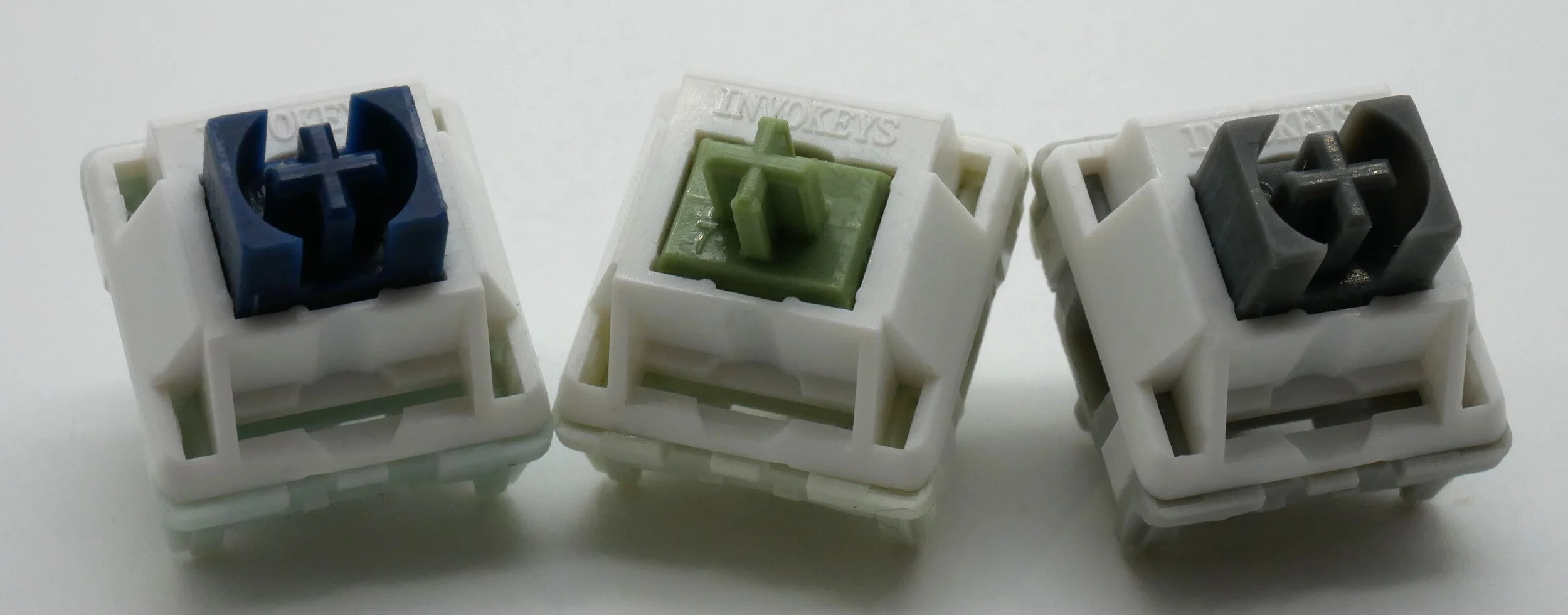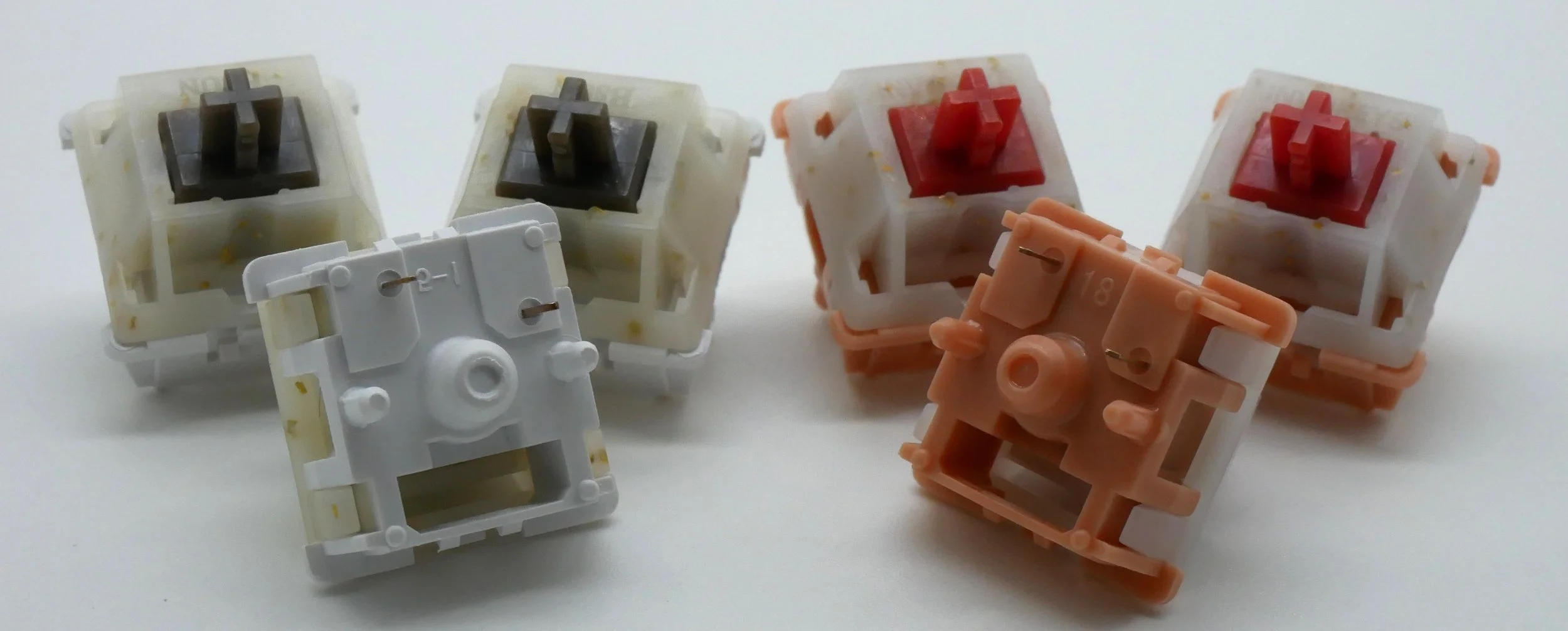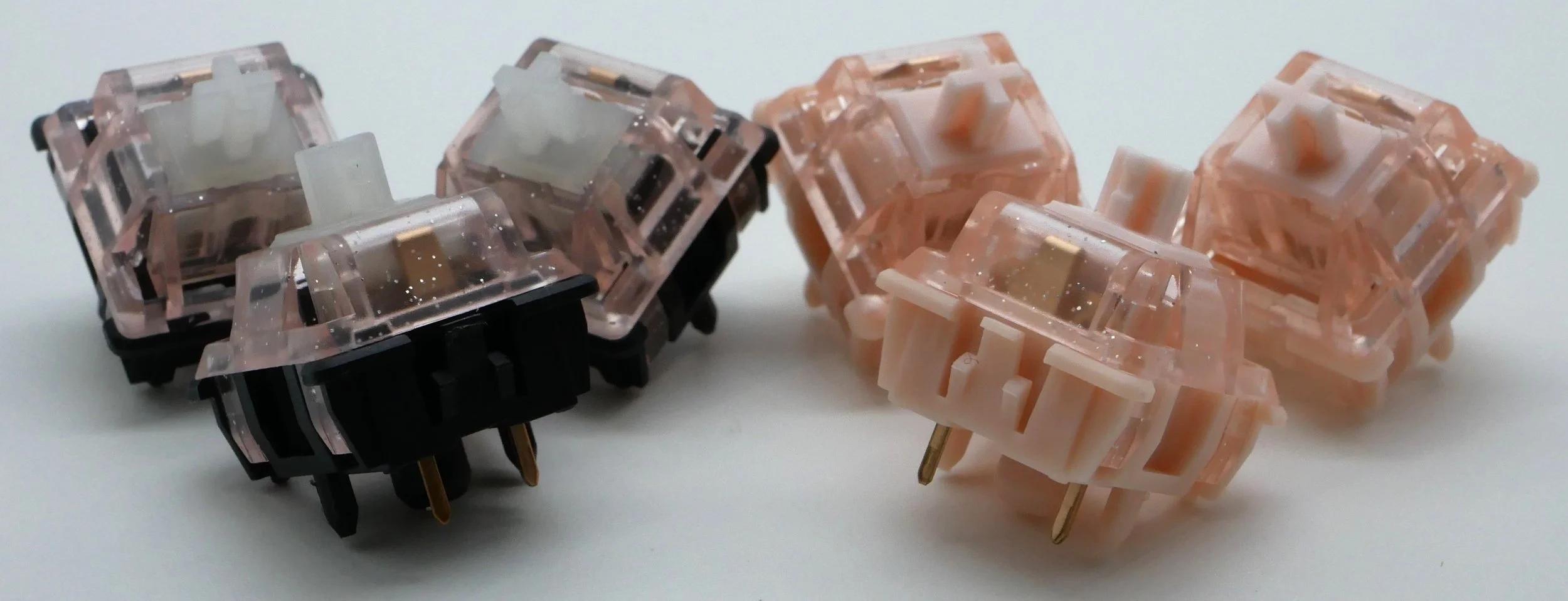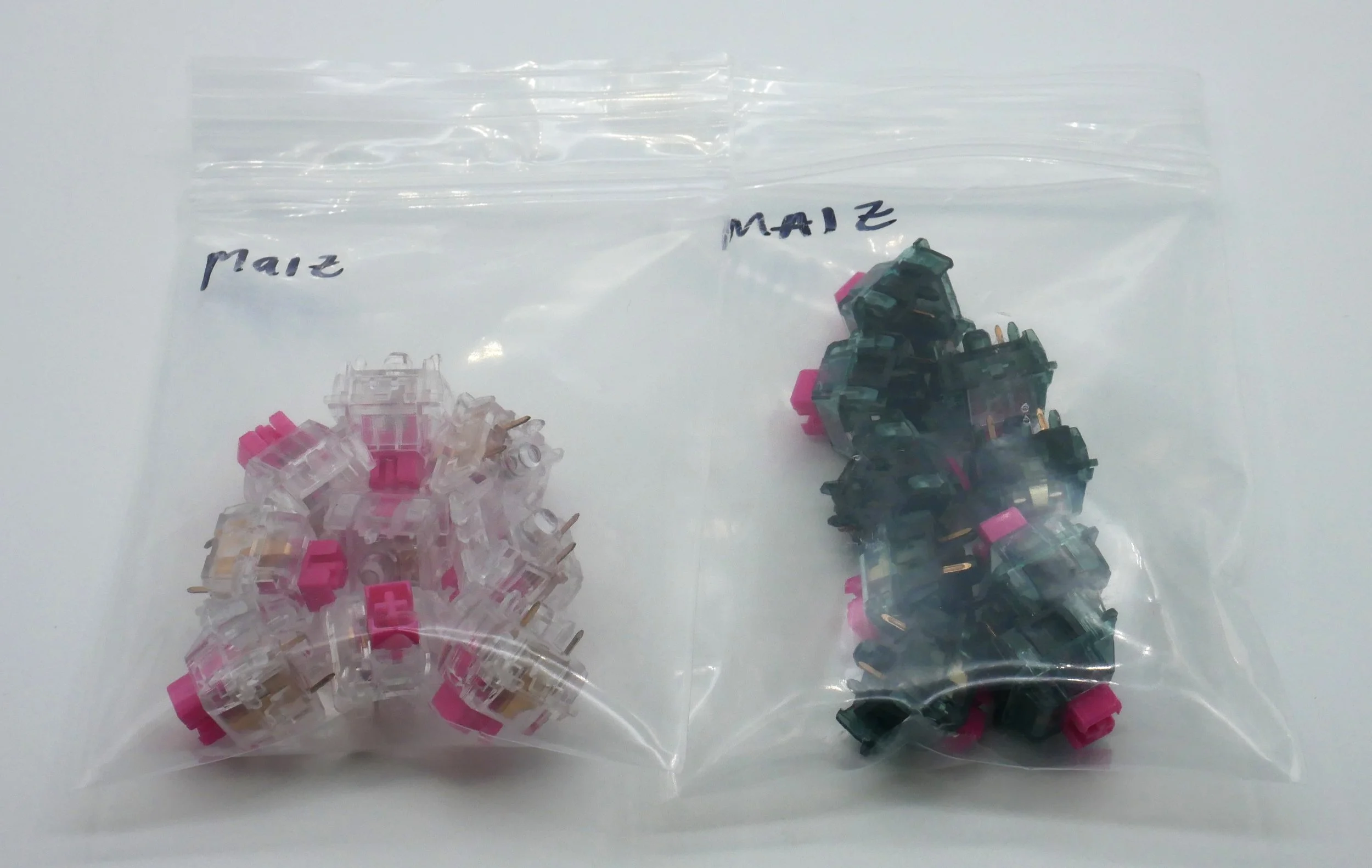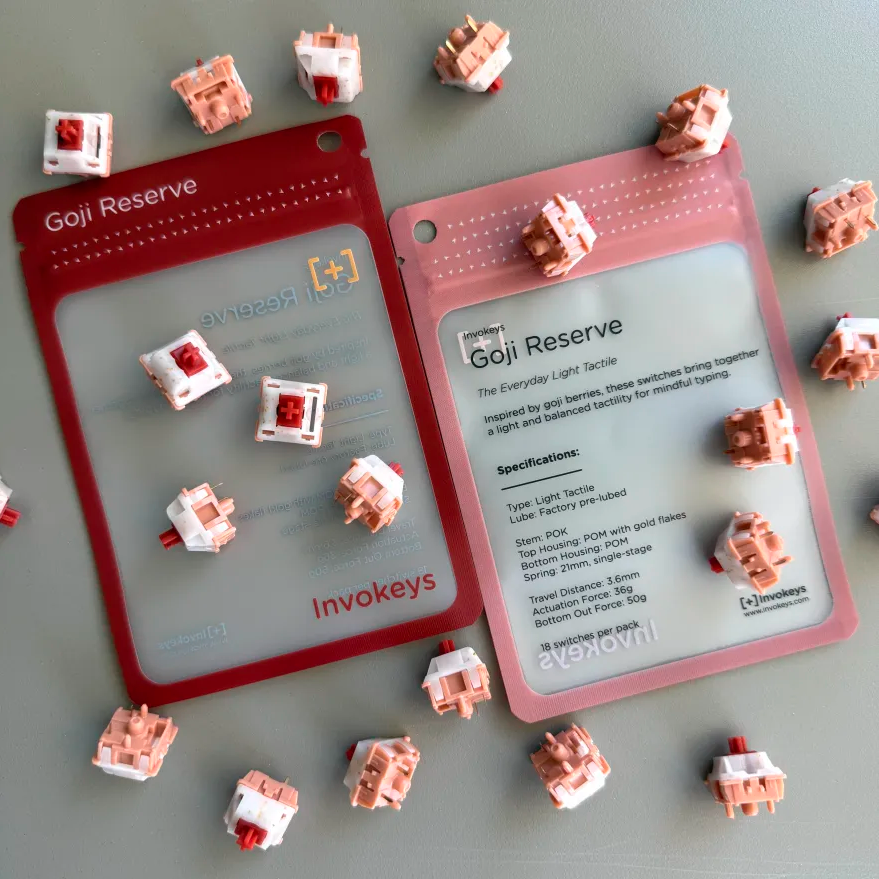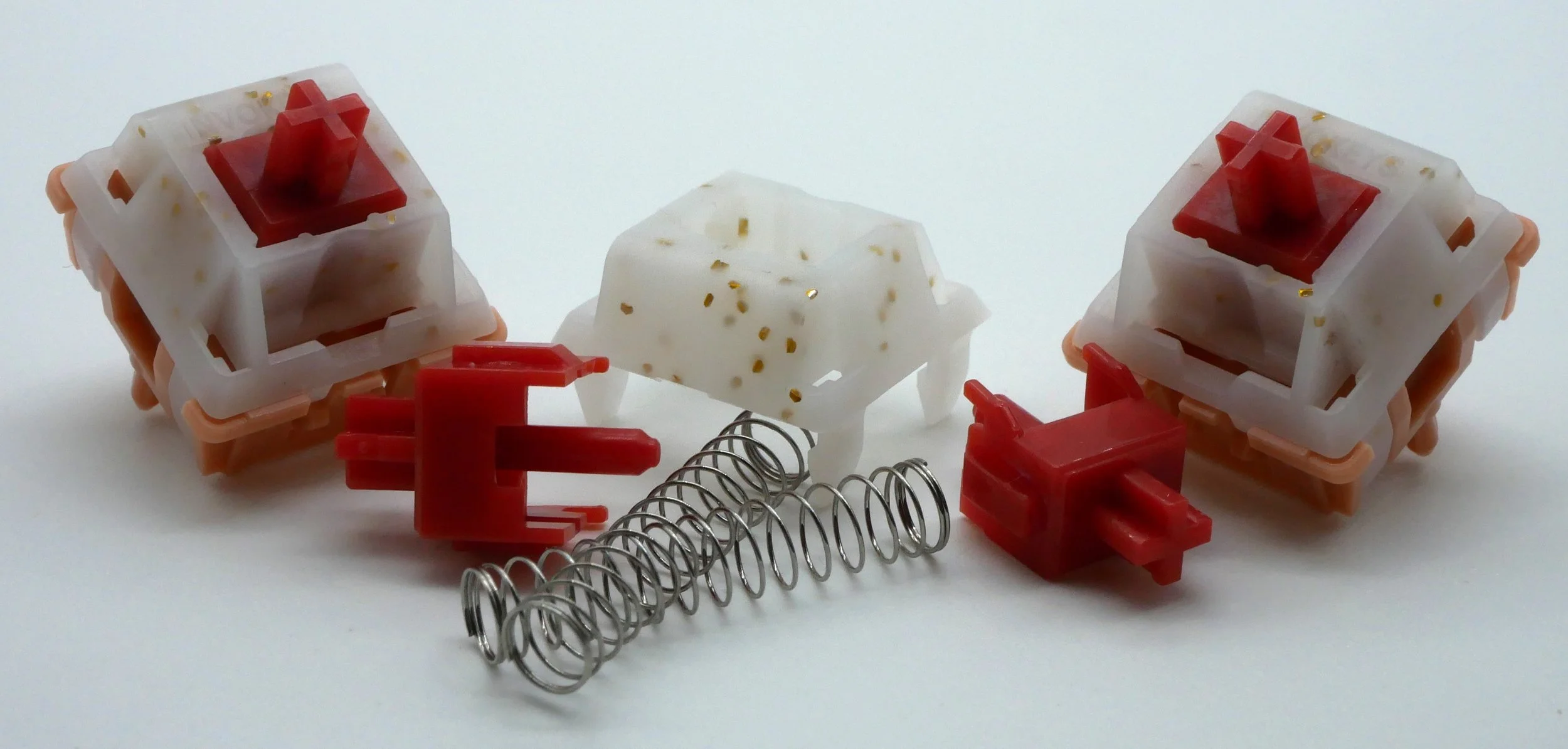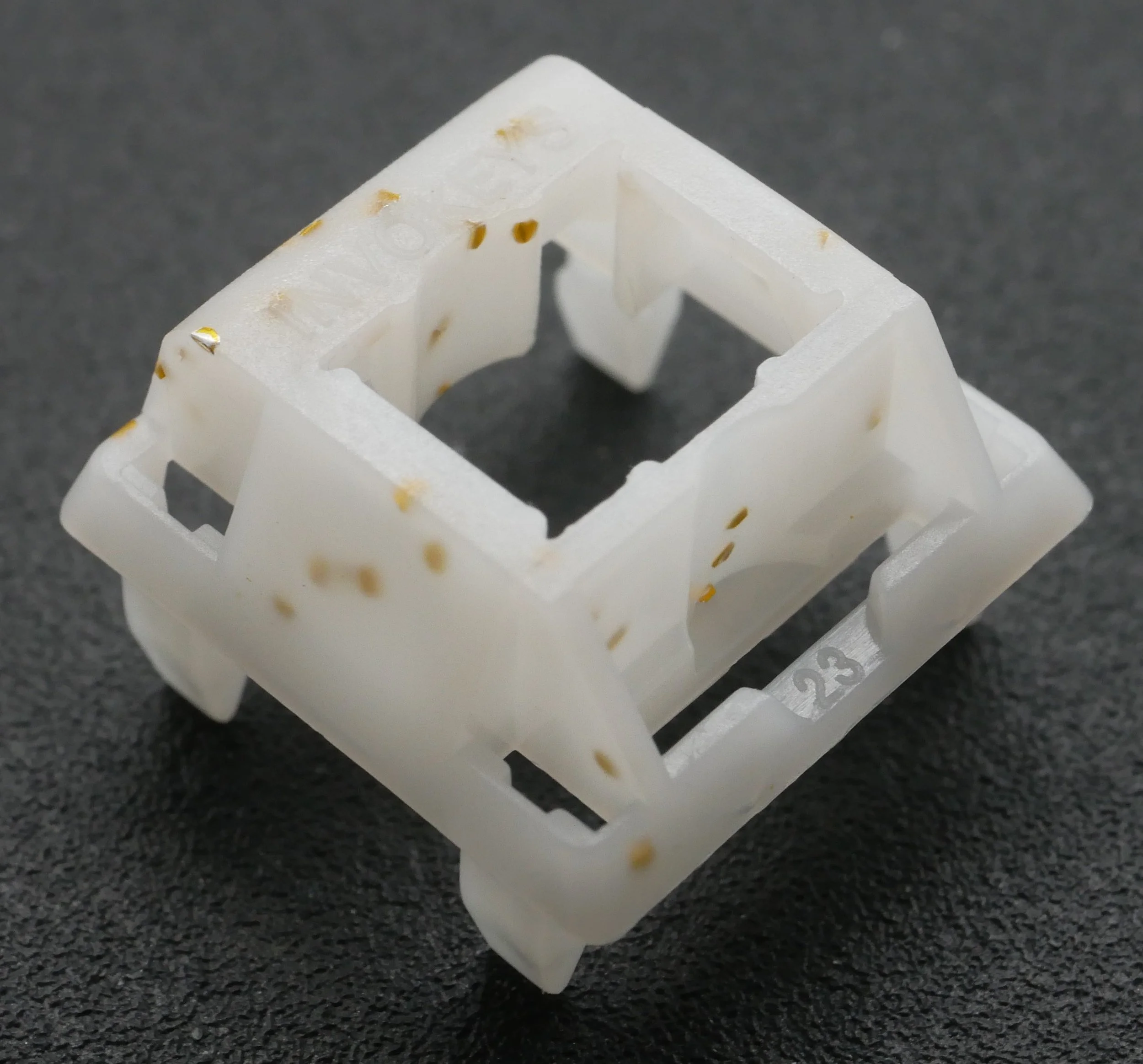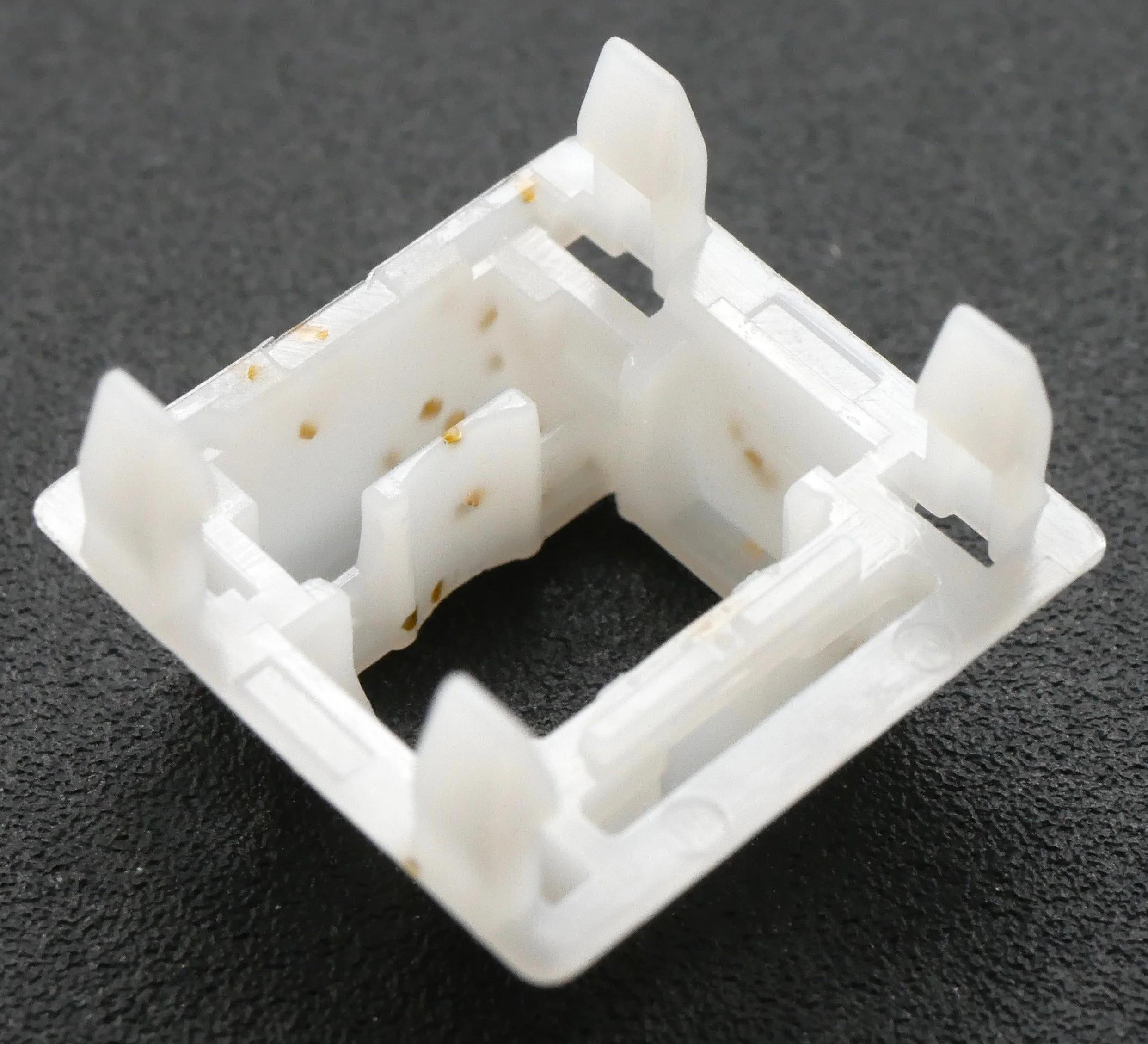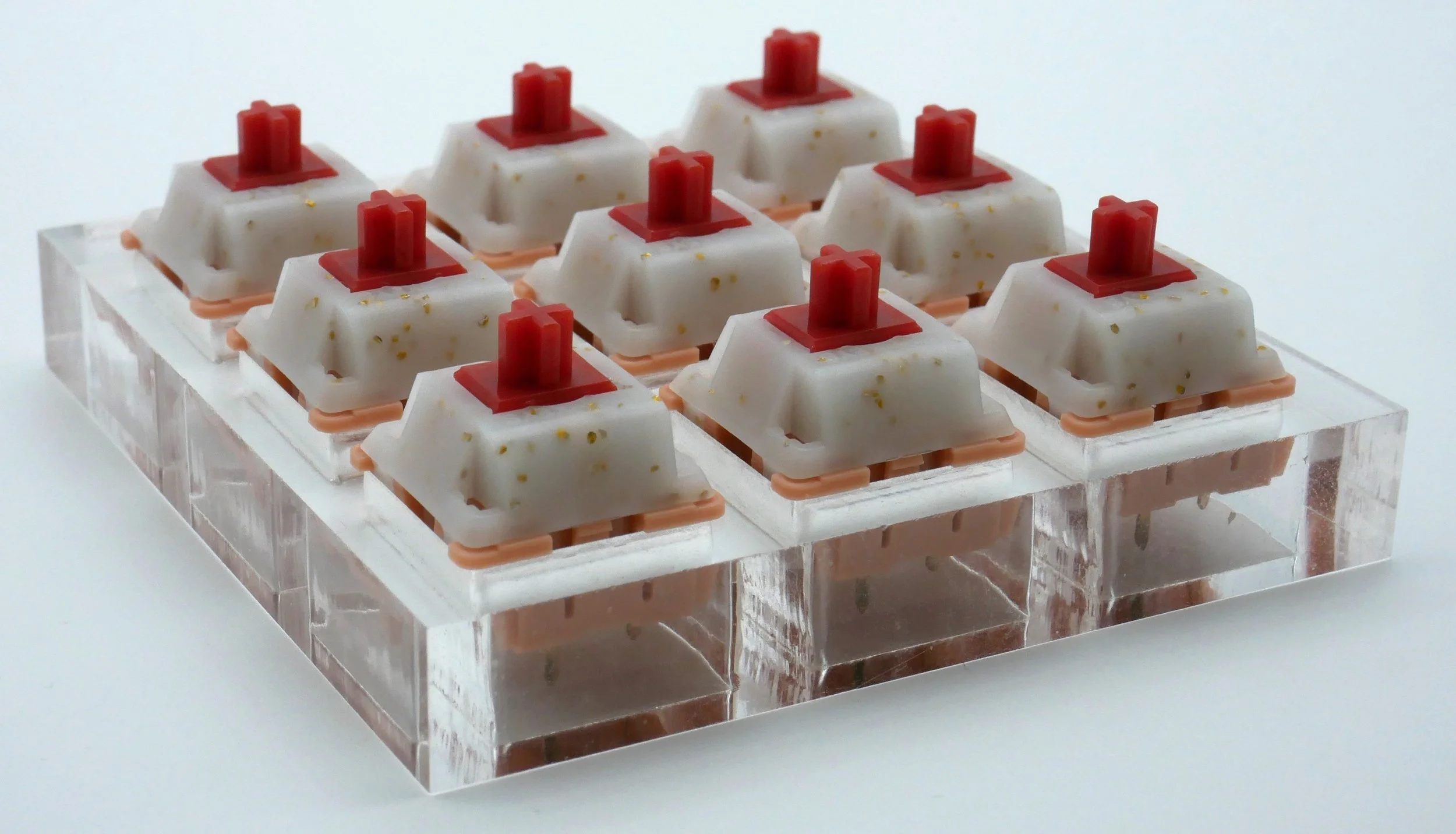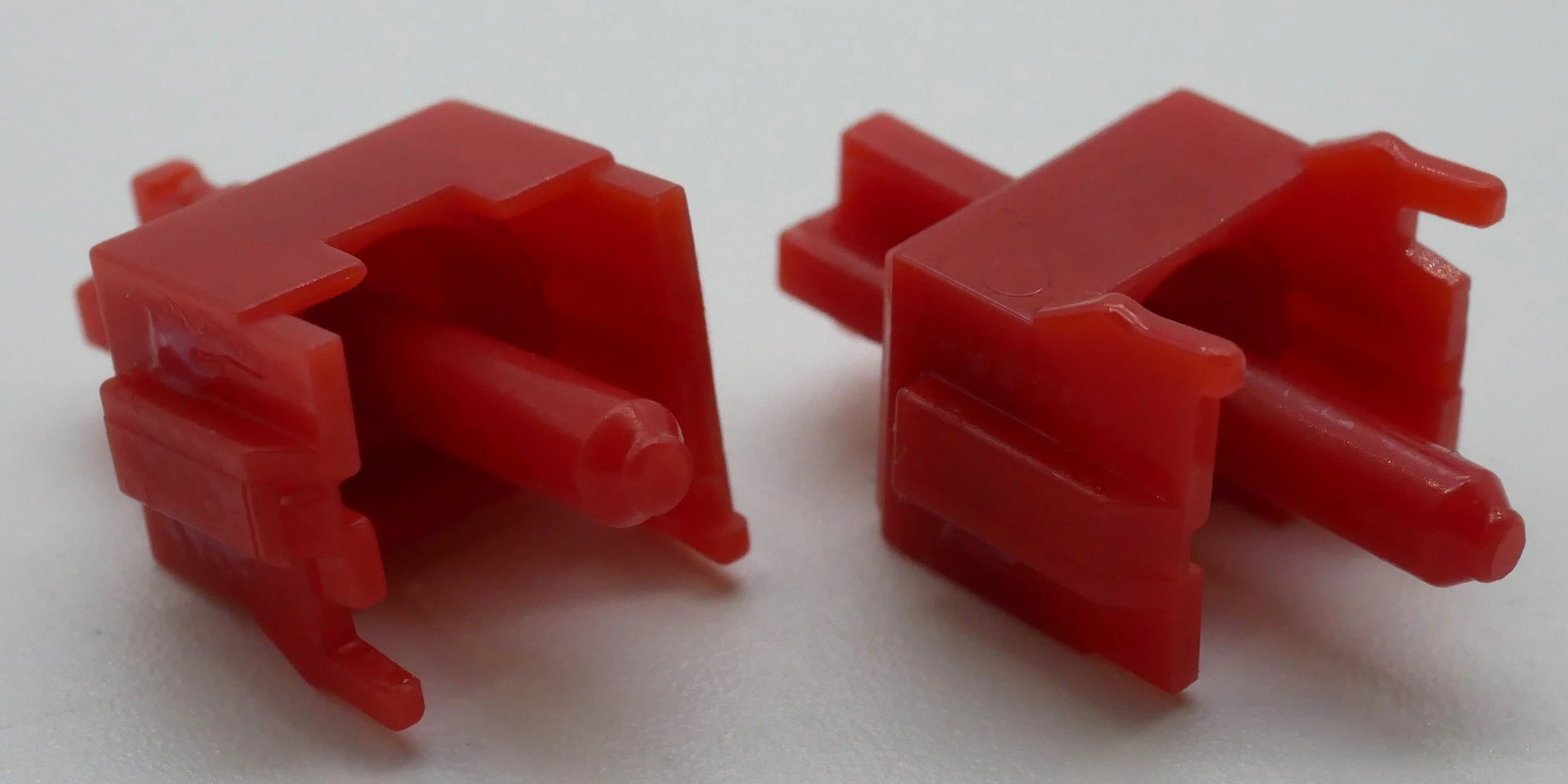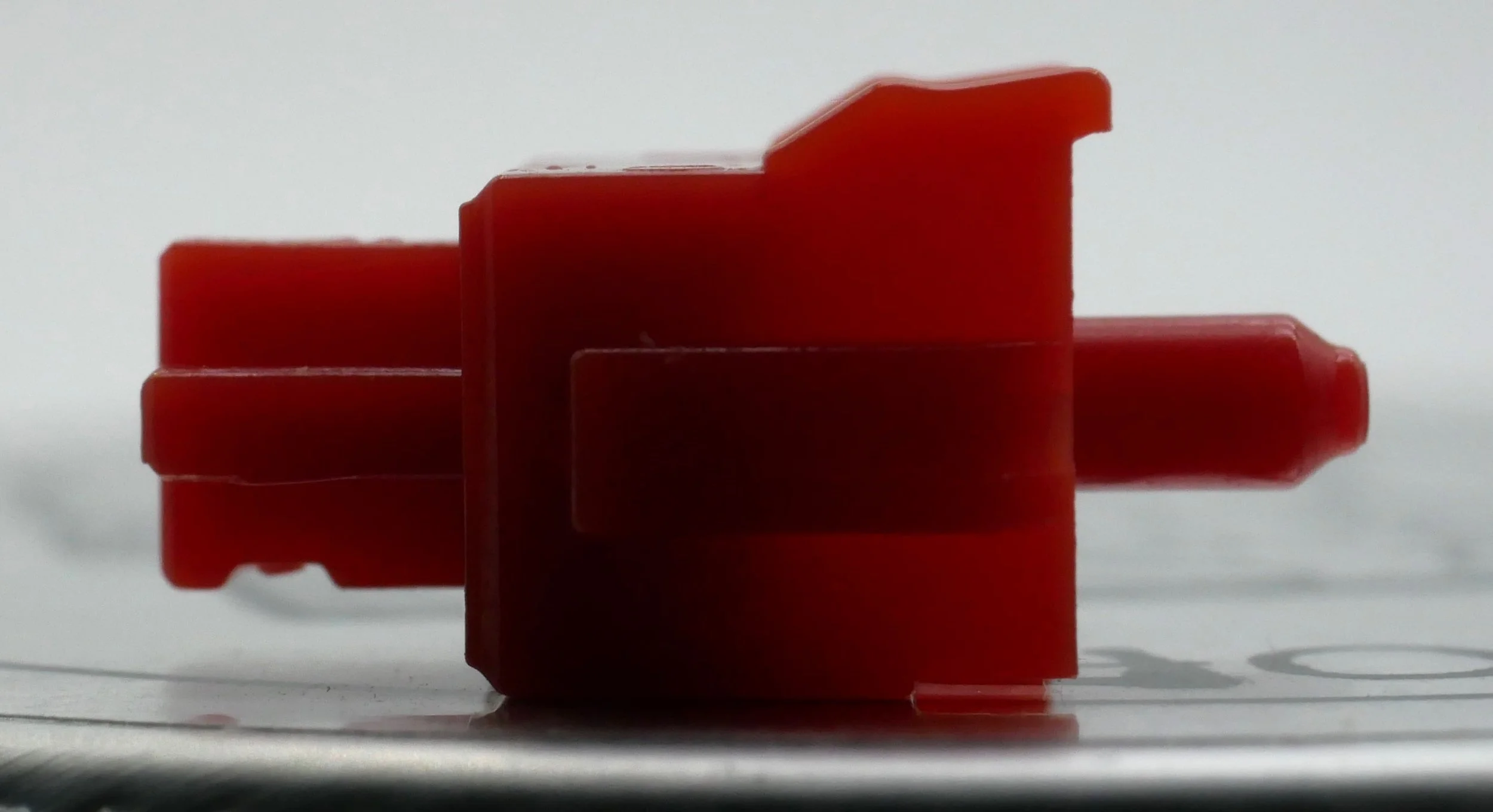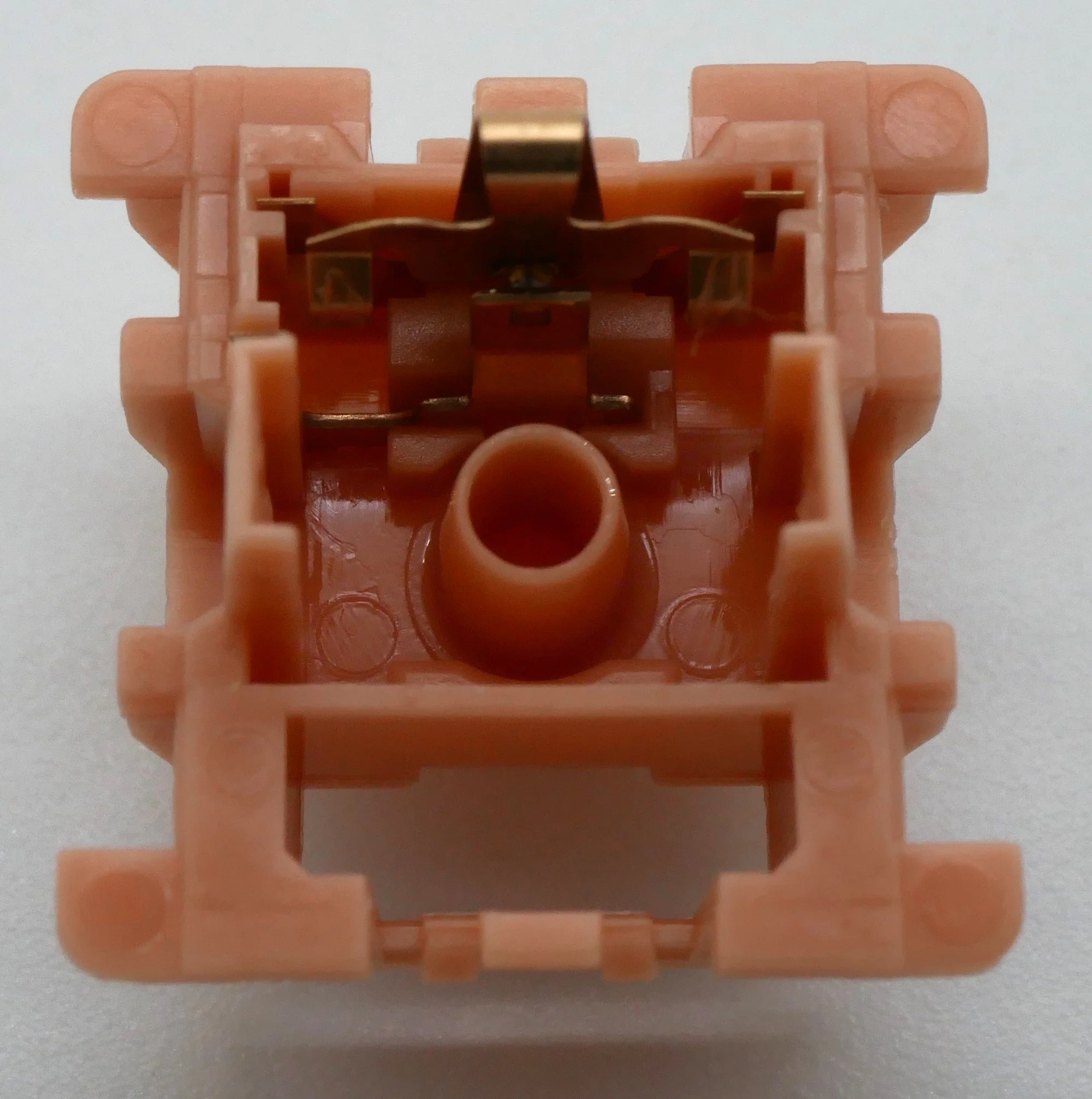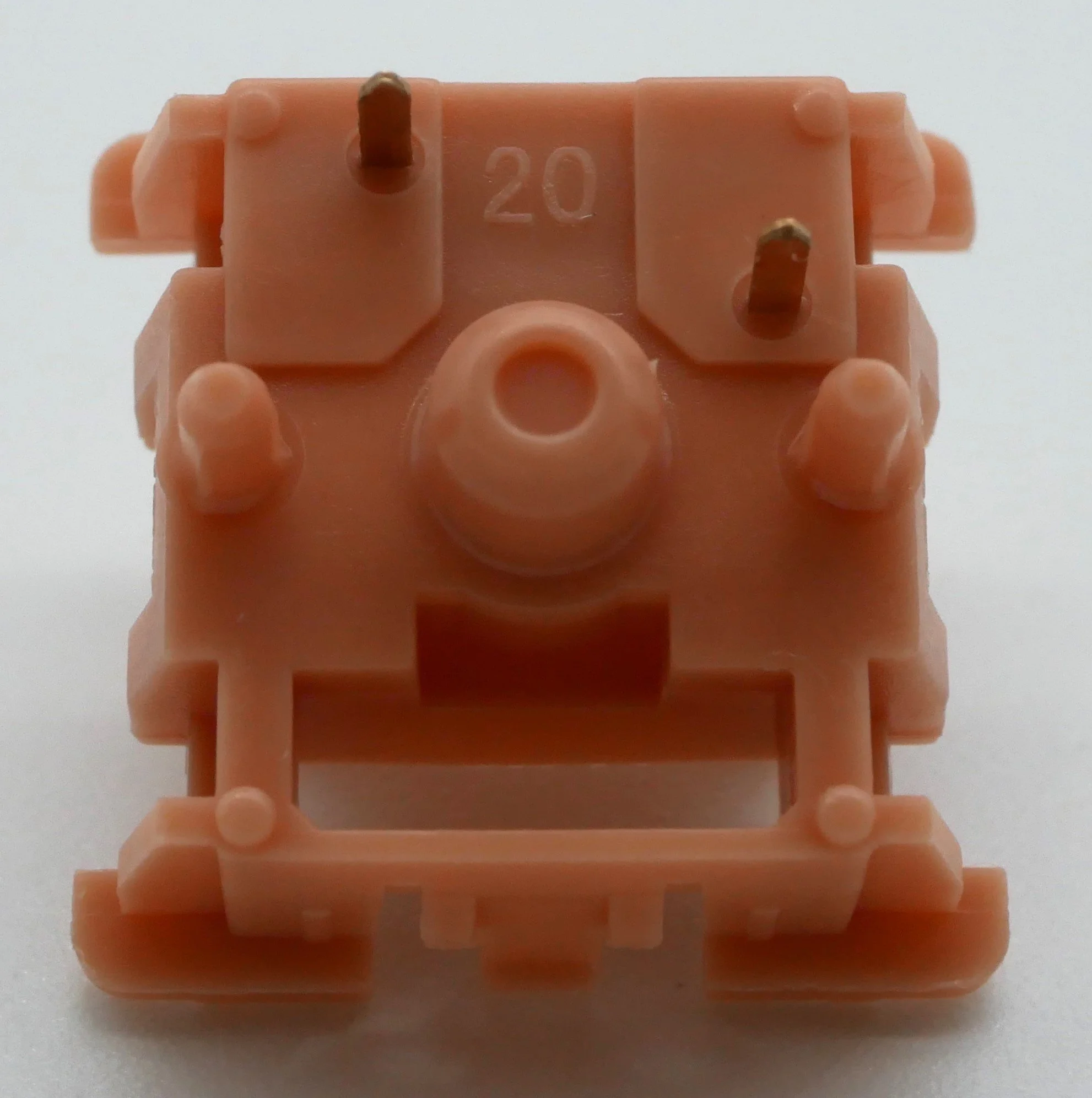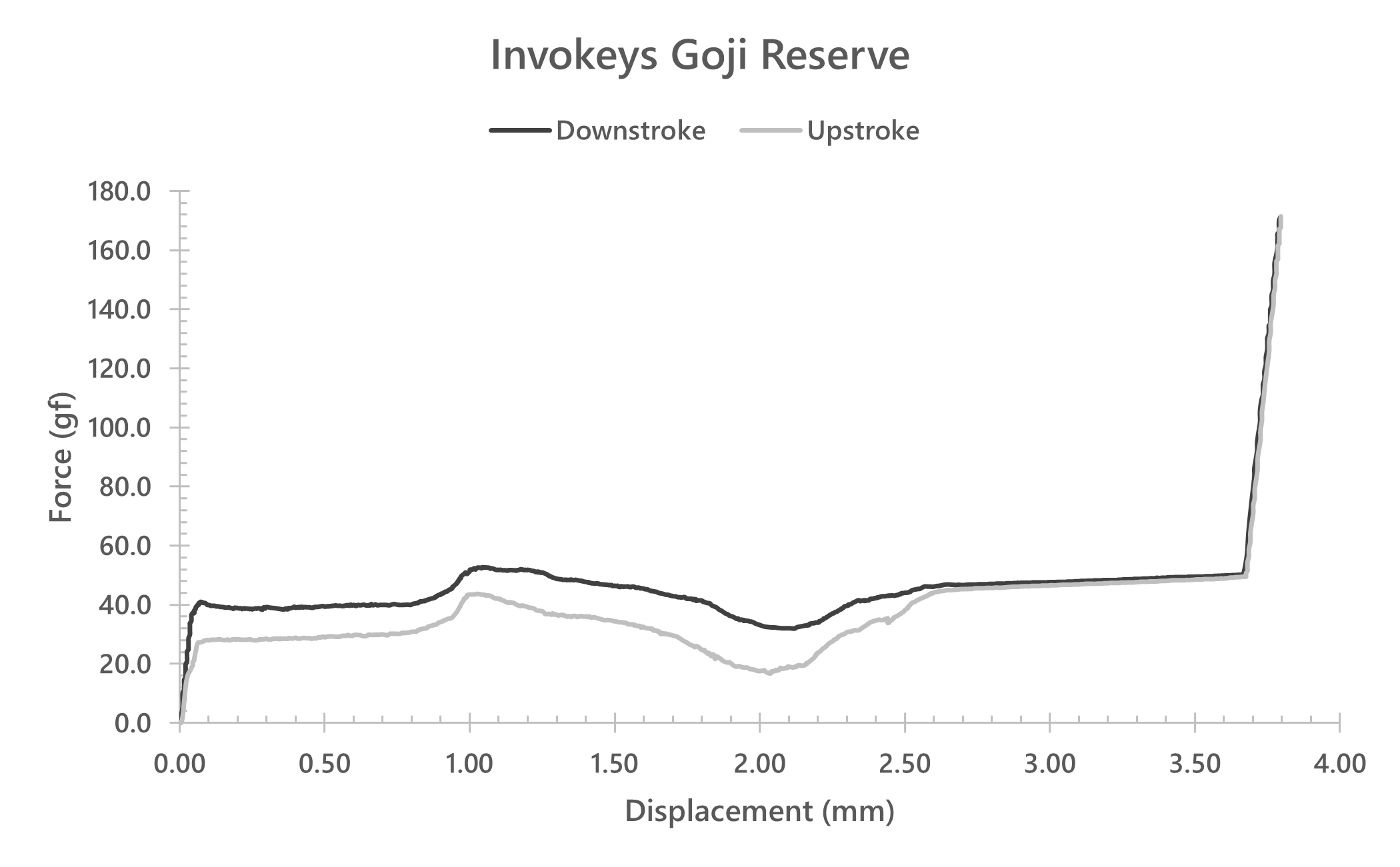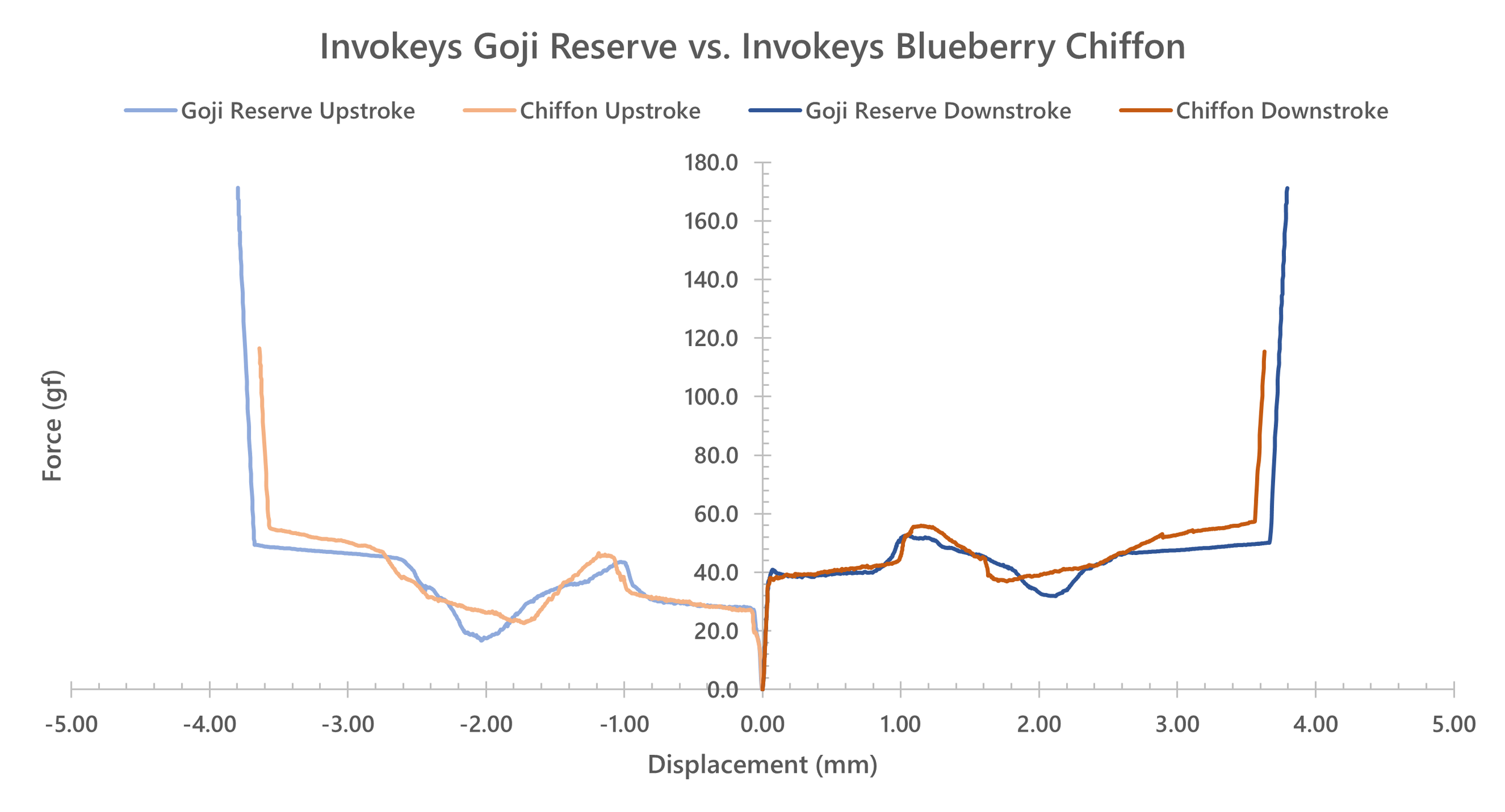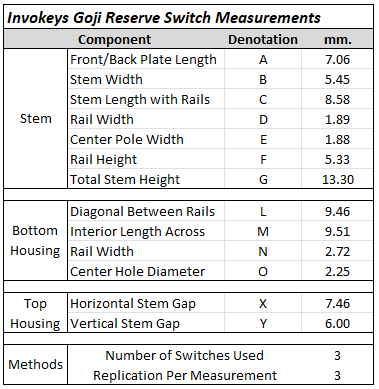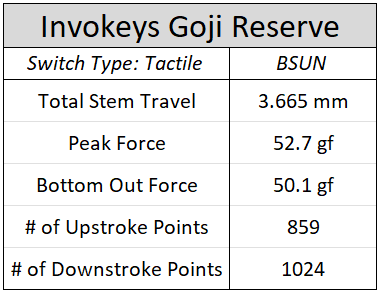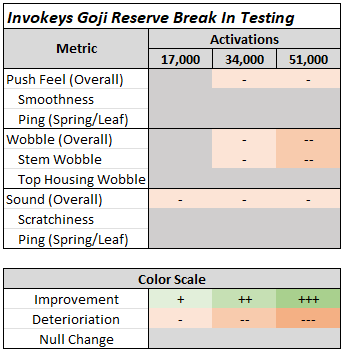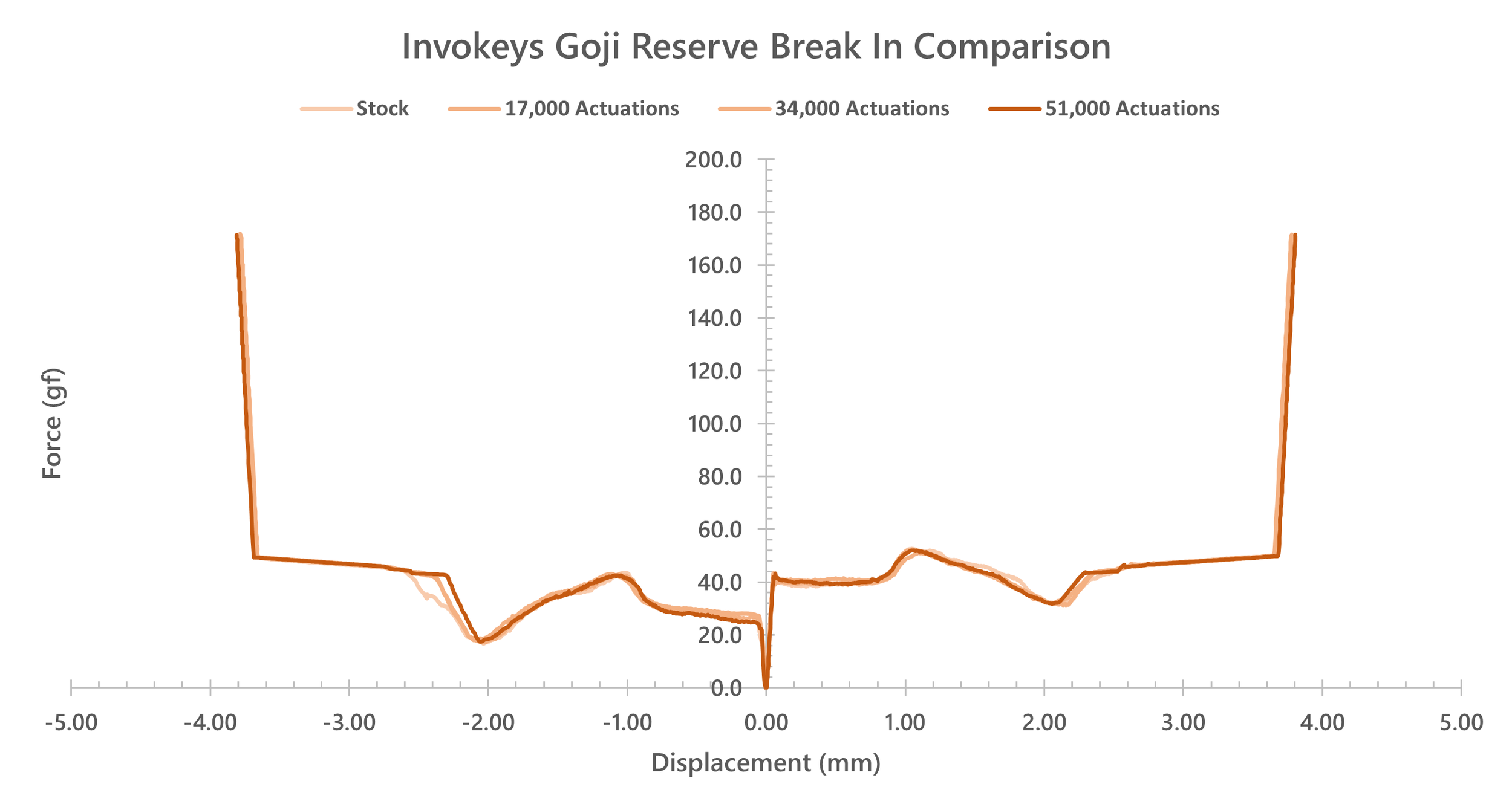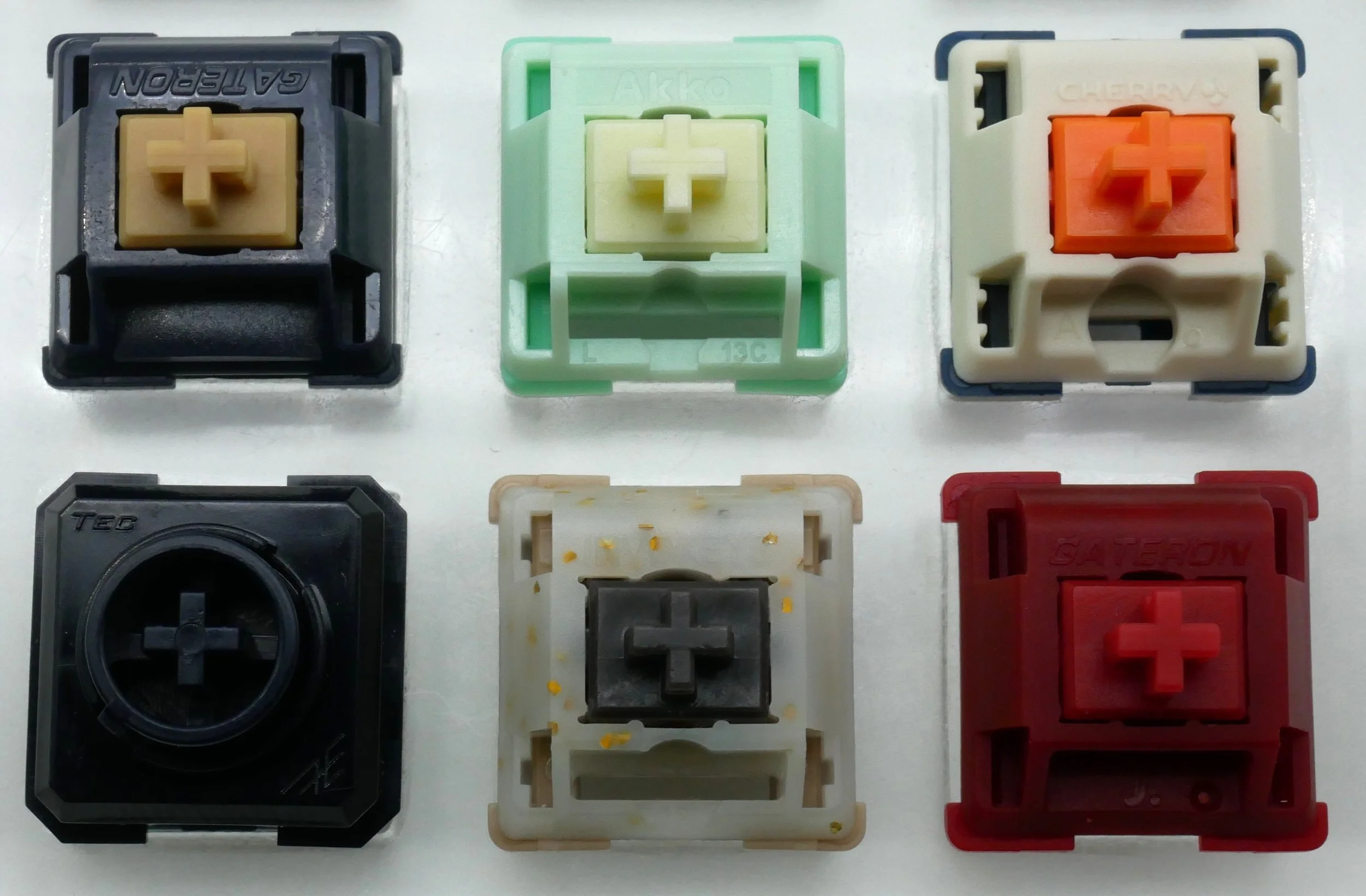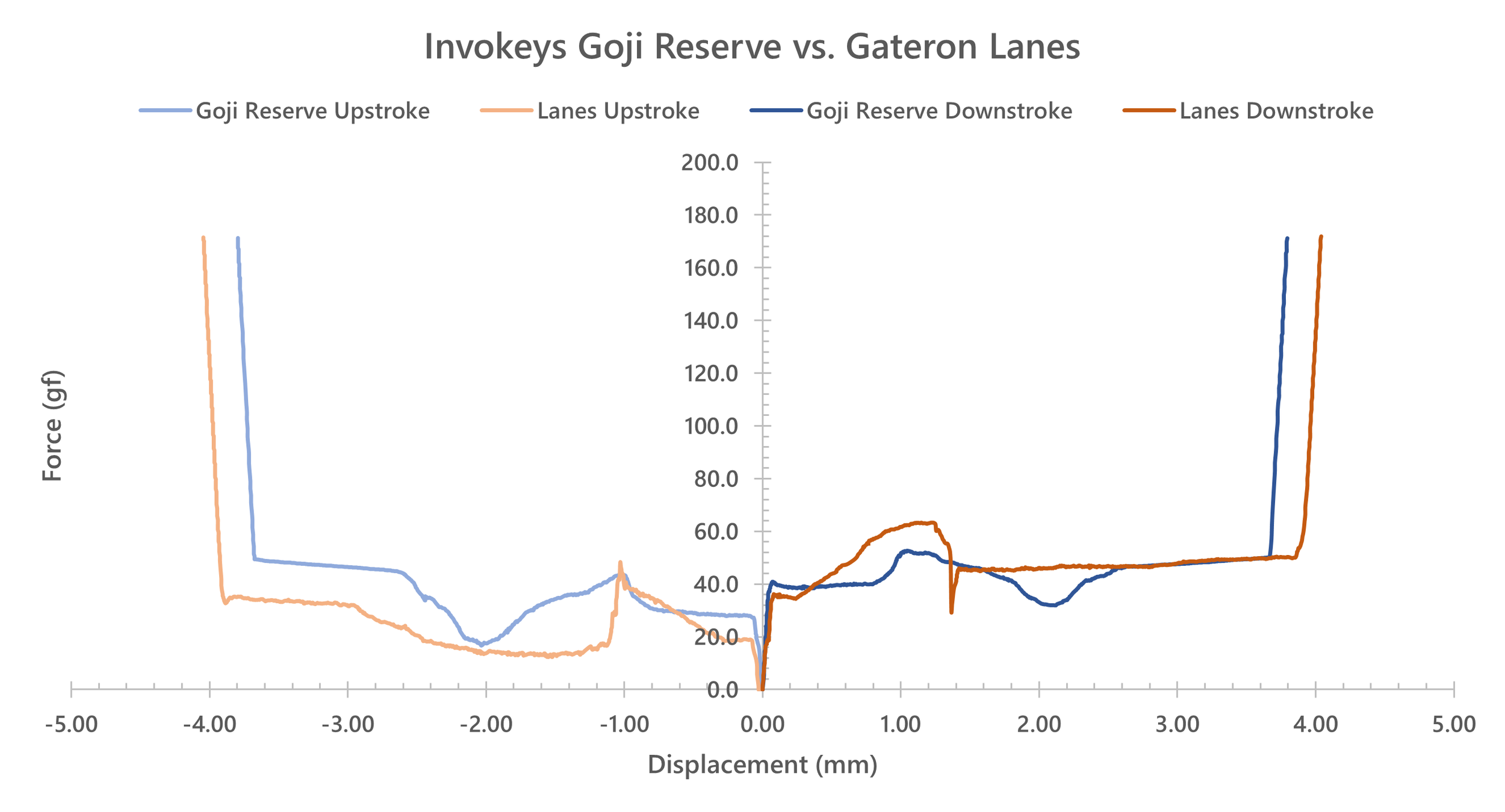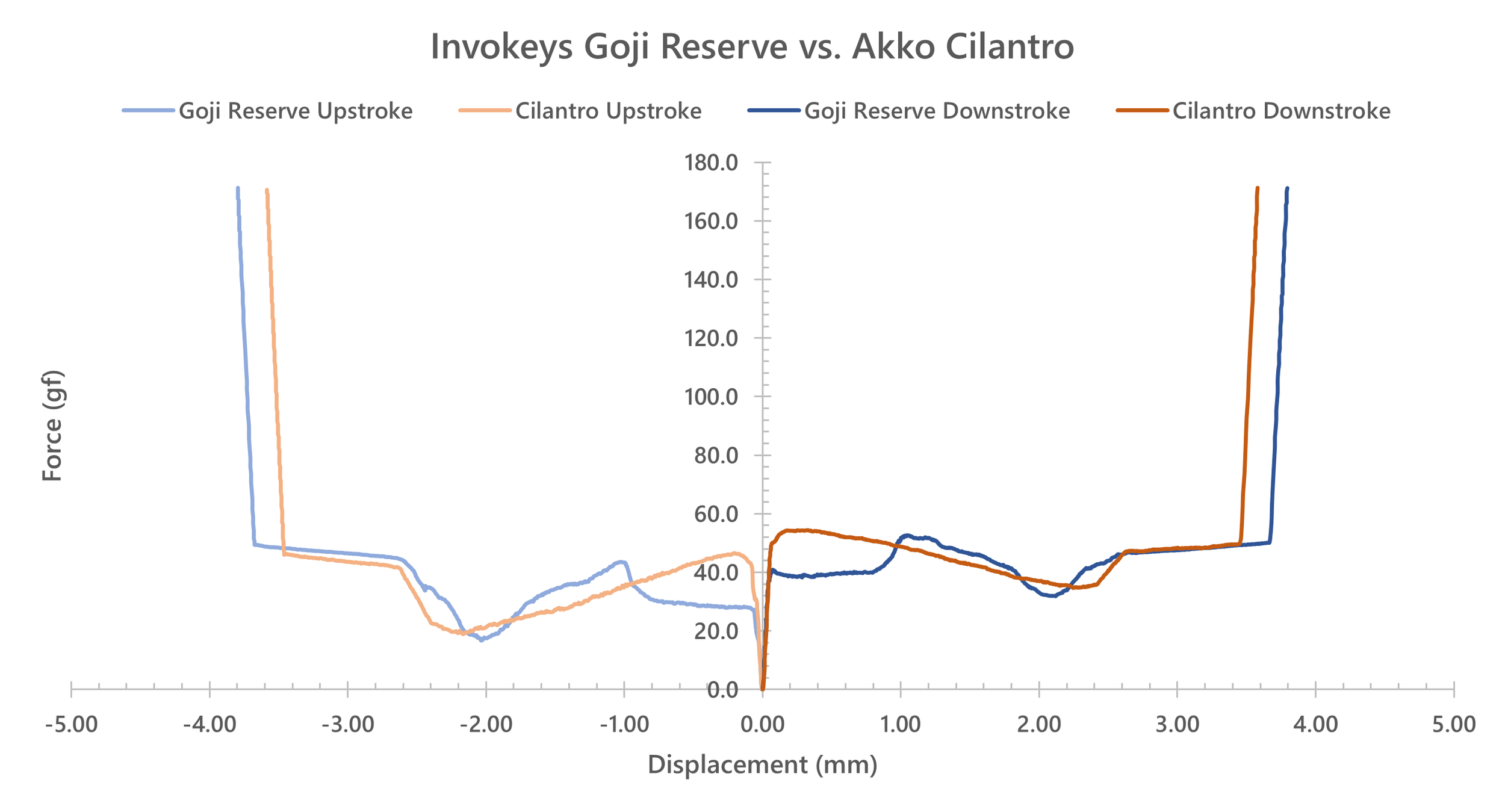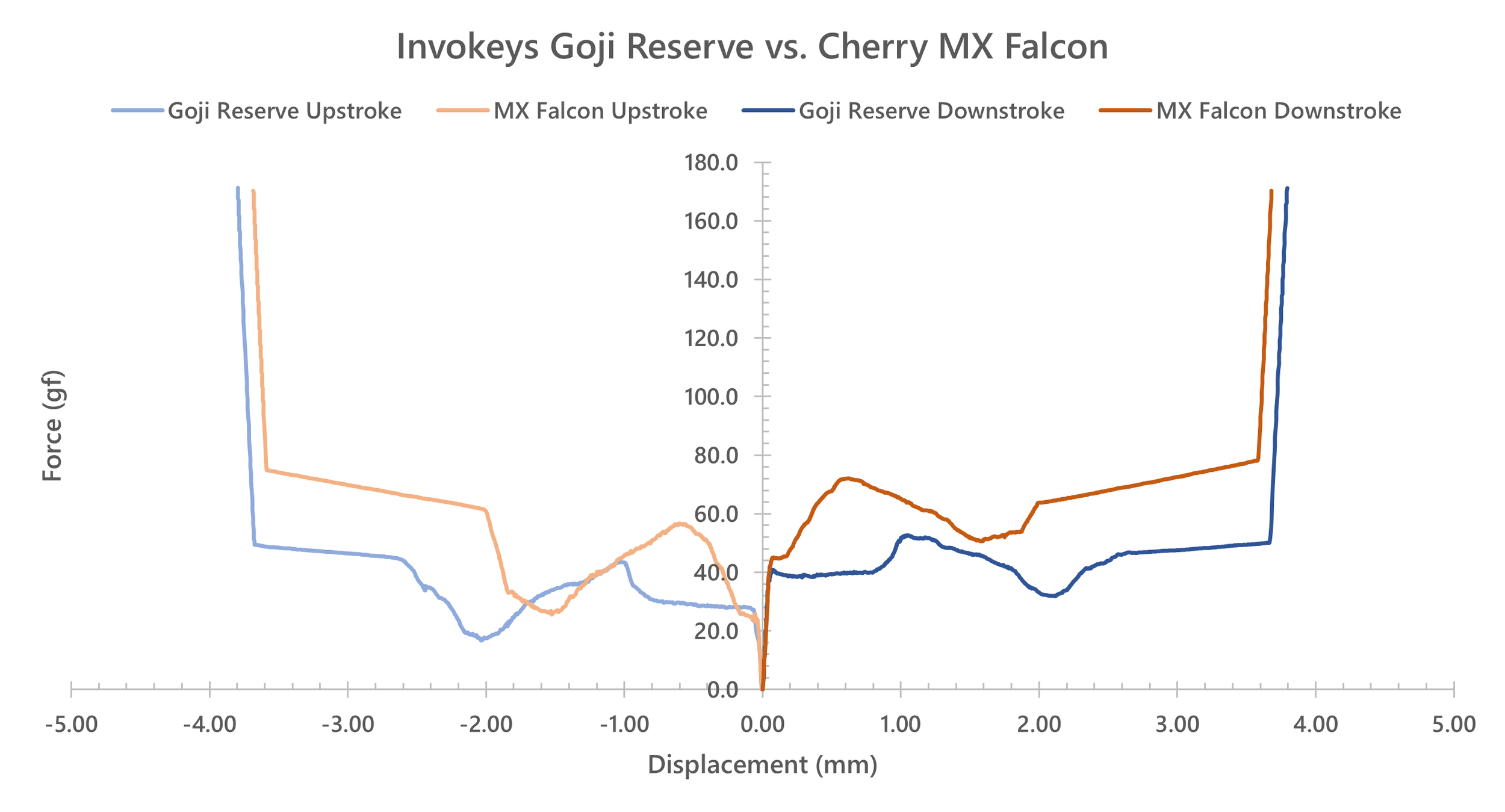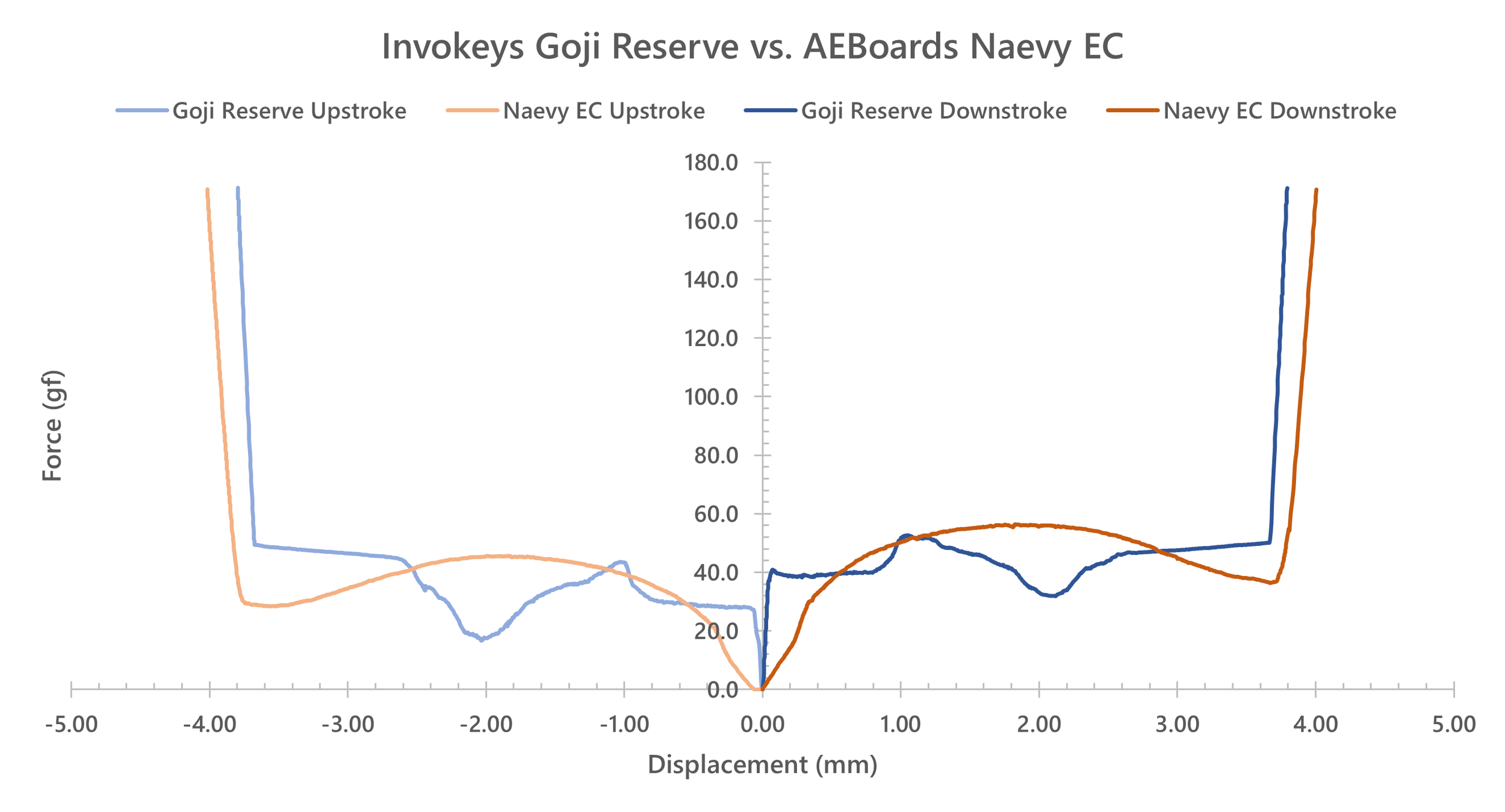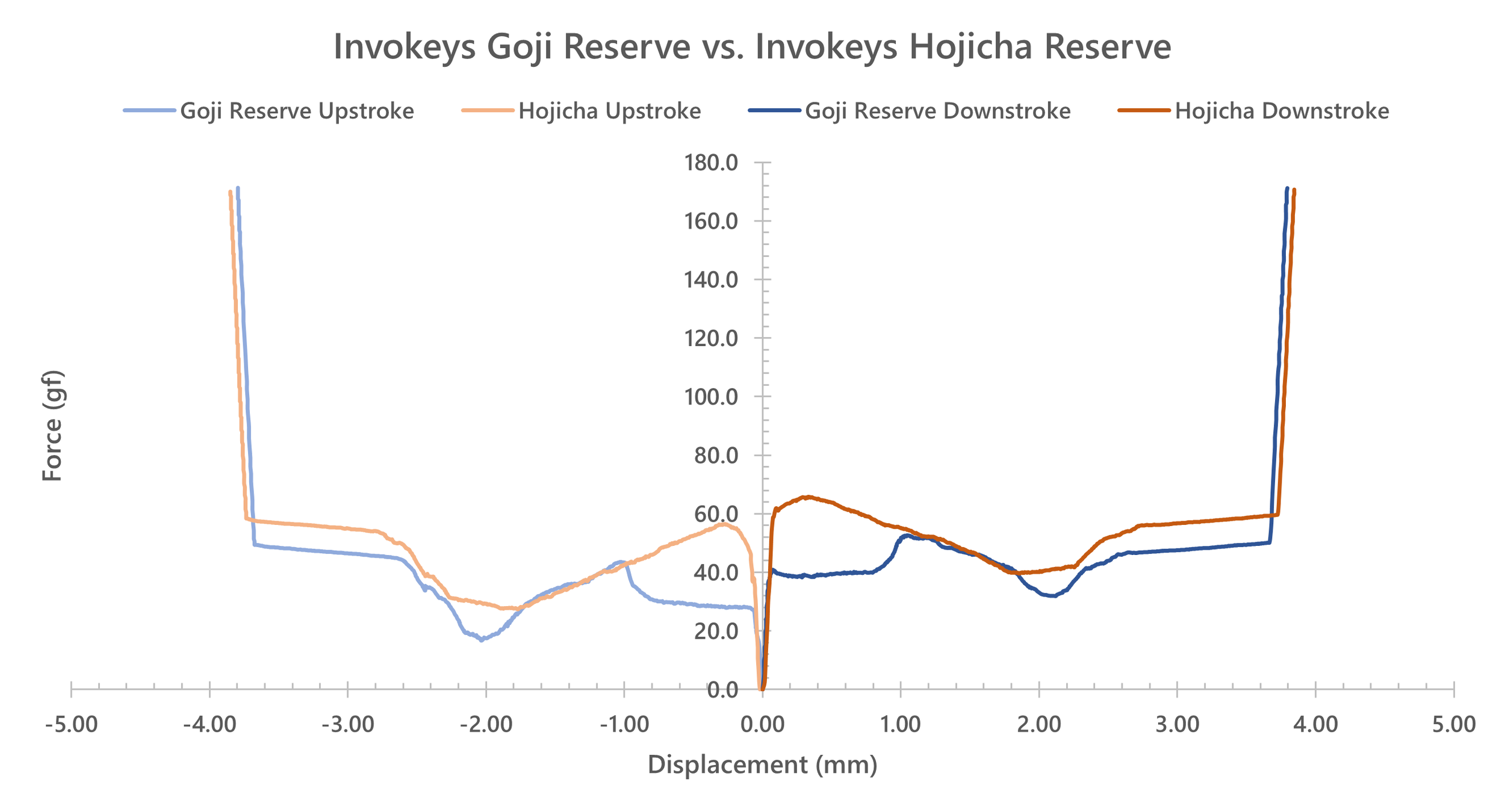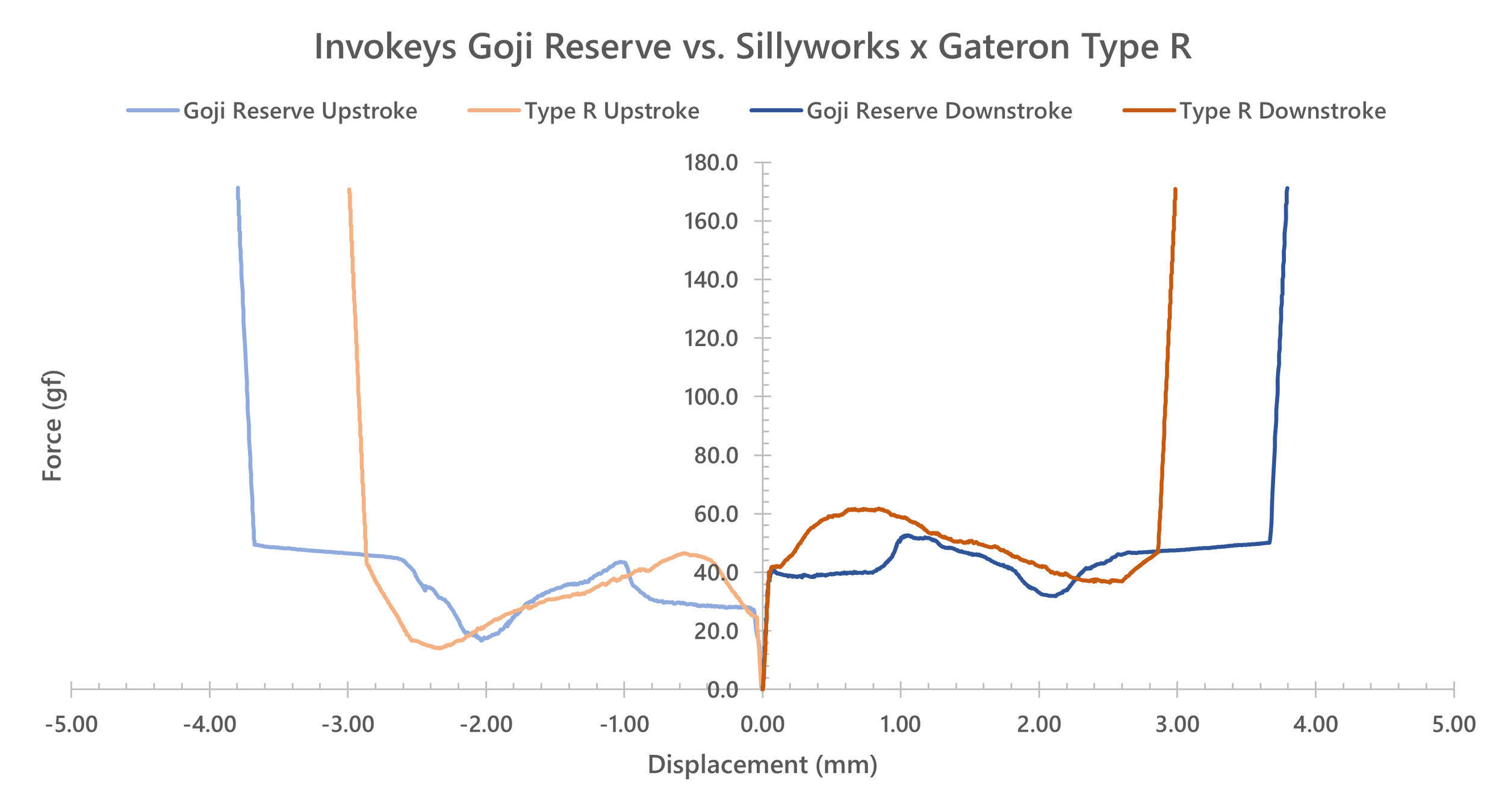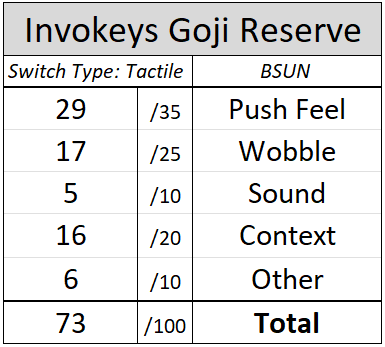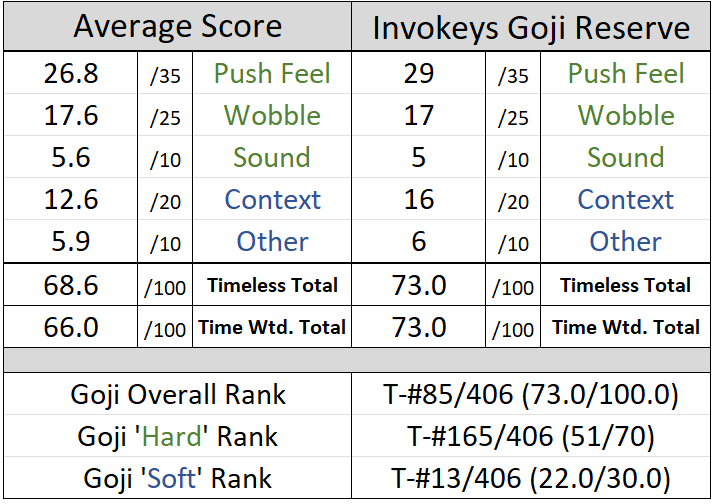Invokeys Goji Reserve Switch Review
So, it’s been about two months since I bought and moved into my first standalone house and I have to admit that it’s all been pretty normal for the most part. Knocking on every wood panel I can find as I write this next part, it doesn’t feel as if there have been any big surprises yet – no massive DIY home renovation projects that have me reconsidering life, or really any massive utility bills that were exponentially higher than expected either. Largely, it has all been about what I would have expected living in my first house to be like. That is, except for one single thing: buying candy for Trick or Treat this year. Having lived in multi-unit apartments in concrete jungles for the vast majority of my life since I stopped trick-or-treating, myself, I have completely grown out of touch with the concept and forgot that it was even expected of me as a new homeowner. Not wanting to let the neighborhood kids down at all with this looming this upcoming weekend, I went to the store last week to shell out for candy and was absolutely blindsided with how expensive it is. I mean holy shit, candy actually costs this much? Did I really just spend $50+ to get this small amount of candy that might not even last me the full two hours that the trick-or-treating is supposed to take place from? That’s also another thing that is entirely different now too: trick-or-treating is hosted on the nearest weekend before Halloween for a set amount of hours just around the time that sundown occurs. I swear that I can remember trick-or-treating times in my youth that would have me up and walking the streets until 10 or 11 PM on a random school night just to come home and get next to no sleep as I sorted through candy before the next day. Is that really how much things have changed in a decade? Now that I’ve bought a house I suppose I am officially on the clock to get as out of touch as quickly as possible in as short of time as possible, and oh boy am I rocketing towards it way faster than I would have expected. (I suppose I do somewhat know what the ‘6-7’ meme is so maybe I’m not too far gone yet.) Anyhow, my apologies to any of you who deal with me on any of the social media platforms that I frequent – I’m going to officially be out of touch on basically anything that isn’t switches from here on out.
Figure 1: Honestly this was the best deal I felt like I could find and even that gets steep when you need to buy three or more bags...
Switch Background
Long time readers of this website will know that I’ve covered more than my fair share of the numerous switches that Invokeys has released over the past handful of years. Starting all the way back with the Invokeys Matcha Lattes in January of 2022, I’ve gone on to cover the Blueberry Chiffons, Black Sesames, and even the Hojicha Reserve switches – and those are just the full length reviews! There’s hardly an ounce of their history in both public switch release and prototypes that I’ve not covered by this point in time, and honestly how could I not? Of all the smaller, more dedicated switch selling storefronts that I’ve encountered and bought from over the years, Invokeys has been one that has really always consistently impressed me time in and out since their very first releases. Some combination of their marketing, their switch designs, and just the fine polish on all of the small details of their switch releases always seems to be exceedingly well planned out and it tends to make for something that is easily reviewable with tons of interesting facts and details that would otherwise go underappreciated in a simple 30-second sound test video. That isn’t to say that I’ve been easy on them, though, as I would be lying in saying that it doesn’t set my bar of expectations equally high on them as well. Sure, Invokeys has been more than kind in sharing historical details and prototypes for documentation over the years, but I almost certainly would be buying their switches even if I didn’t have that connection with them in the first place. (I am almost certain that I was among the first orders to purchase some of the new Goji Reserve switches too and I definitely bought enough to fill out a board if I ended up liking them enough.) With enough of my personal bias now explicitly on display for this review, I can recognize that not everyone reading this review likely has the same long winded experience with Invokeys nor may know all of the switches from them that I’ve covered over the years. For those of you who aren’t familiar, I personally view Invokeys’ releases as able to be largely broken out into three ‘eras’ as of the time of writing this review:
The “Aflion Start” – Kicking off in early 2022, Invokeys caught quite a bit of attention form the community at large with their Matcha Latte linears, Black Sesame linears, and Blueberry Chiffon light tactiles. All three garnered some degree of a cult following amongst fans, with some preferring the rather generous and well applied lubing of the linear switches and some the light, “MX Brown”-like tactility that the Blueberry Chiffons catered to like few other customized tactiles.
Figure 2: Invokeys Blueberry Chiffon (Left), Matcha Latte (Middle), and Black Sesame (Right) switches.
The “Exploratory Search” – After having sustained quite a bit of success throughout 2022 and into 2023, Invokeys turned their sights outwards towards new manufacturers and switch types they had never tried before including the Daydreamer/Nightshade silent LICHICX collab with Alas, as well as BSUN-made linears in the form of the Purple Rice switches. (One other Aflion-made linear in the form of the Red Beans also snuck in here as well.)
Figure 3: From Left to Right - Invokeys Red Bean, Invokeys Purple Rice, Invokeys x Alas Daydreamer, and Invokeys x Alas Nightshade.
The “Gilded Age” – With Aflion no longer making switches in quite the way that Invokeys had hoped for, and LICHICX slowing down considerably leading up to their inevitable closure and sell-off in late 2024/early 2025, Invokeys made the leap to BSUN for a new trio of switches to replace their original three. Managing to pull off an innovative gold-flake embedded top housing design, this new “Reserve” line of switches included the Matcha Reserve linears, Pea Flower clickies, and Hojicha Reserves to fill the spots as Invokeys’ newest flagship switches.
Figure 4: The now complete Invokeys Reserve family switch line including from Left to Right - Pea Flower, Goji Reserve, Matcha Reserve, and Hojicha Reserve.
Shockingly enough, though, I hardly even recognized throughout all of the release announcements for the new Reserve switches that this trio was not a perfect recreation of the original trio of switches from Invokeys’ Aflion era. Forgoing the light tactile prototypes of their initial design, the Pea Flower switches ended up being clickies and the Hojicha Reserves were medium-sized tactiles leaving no rue follow up successor to the widely appreciated Blueberry Chiffon switches. And it’s this exact gap and lack of true follow up light tactile that led to the creation of the Goji Reserve switches that prompted this review here today. Or, rather, it’s what inspired their creation from the get-go.
Rather than trying to piece together some grand narrative of where these switches came from or the timeline upon which they were designed, I figured I’d leverage my good enough connection with Invokeys and reach out directly to them to ask about the inspiration of the Goji switches. Paraphrasing James, the proprietor of Invokeys, the Goji switches were designed to be their latest take on the Blueberry Chiffons – self-described as “Cherry MX Brown switches with a long stem pole” – with as many improvements as they could fit in. Citing customer feedback that the original Aflion-made Blueberry Chiffon switches had a bit of leaf ping to them, inconsistencies in the factory lubrication, and a somewhat jerky, inconsistent tactile bump, the goal was to minimize or eliminate these issues altogether if possible while also making a smoother, more rolling tactile bump and stroke to match. Additionally folding in some feedback that their recent spring weights for the Reserve line of switches were a bit heavy, the initial design requests for the Goji switches would be that they have springs that bottom out at a lower spring weight than any of those recent releases. Having turned over their example batch of Blueberry Chiffons to BUSN in January, BSUN resoundingly nailed their first prototyping attempts, fitting all of that feedback perfectly into one single round of not-Goji-berry-colored switches and the rest was history. Finalizing the colors of the stems and bottom housings, as well as their materials in POK stems and POM housings due to their preferences with sound profiles after having tested such, the Goji Reserve switches were finalized with an infinitely simpler, less iterative process than their previous Reserve switches which I noted in the Hojicha Reserve Switch Review.
Figure 5: Invokeys Goji Reserve BSUN factory prototypes (Left) compared to their release designs (Right).
With Invokeys now treading on what seems to be newer, more firm ground with a well-established manufacturer like BSUN, people might wonder if this is a signal of a slowing of pace for them and their switch offerings. Completely notwithstanding a demonstrated drive for inventive, unique switch offerings, a decent amount of their history has been seemingly propelled by inconsistencies in manufacturer longevity and relevance – with Aflion and LICHICX being prime examples of such. BSUN very likely won’t have these same problems with sustained presence as they’ve been around longer than Holy Pandas themselves. However, despite their landing on a more safe and established manufacturer, I don’t think that this will be the last of Invokeys’ attempt at new switches – and I can say this with full editorial confidence as they did also send over more than just the Goji prototypes above in the package that arrive with them. Keeping in mind that they did not share any further details at all about these other switches included in this package with me, I can say that there’s a semi-silent switch made by BSUN in here, as well as a Hall Effect one, and even some really old (or maybe even new?) test samples of switches from Aflion that they didn’t send over previously. (Maybe they just included these to throw me off of the scent of what they’re doing next.) The most intriguing of the prototypes that came in this package, though, are hardly the semi-silents or the HEs, but a pair of two different linears with the label “Maiz” on them. Perhaps we’re due for a Maiz Reserve switch to add to the lineup here in the near future? Something with a bright yellow stem, muted yellow bottom housing, and milky with gold flake top housing might actually stand out quite a fair bit from their other offerings visually. Then again, all of the Reserve lineup of switches have been made by BSUN thus far and these do kind of look like they might be made by Keygeek… I suppose we’ll only know what the truth to any of this baseless speculation and guessing will be the next time I end up reviewing an Invokeys switch here some months or years into the future.
Figure 6: Sparkle-embedded Aflion prototypes/proof of concept switches sent to Invokeys.
Figure 7: Prototype/proof of concept Hall Effect switches (Left) and Half Silents (Right) sent to Invokeys.
Figure 8: Potentially Keygeek-made "Maiz" labeled prototypes/proof of concept switches from Invokeys.
After having been squared away with their design details through only one single round of prototyping in January of 2025, the longest part of the ‘development’ for the Goji Reserve switches was actually their manufacturing and ship time. With a full production order submitted to BSUN in June, production took place over the course of the month followed by a shipment to the Invokeys HQ in Las Vegas, Nevada in July. With further delays due to shipping, import, and presumably at least one customs agent wondering what kind of weird drugs would be packaged like this, the switches ultimately ended up arriving to Invokeys and their non-US based distributors in September and were listed for sale on September 22nd, 2025. Available at an identical price point to the other previous Reserve lineup of switches at $0.50 per switch in packs of 18 switches, the Goji Reserves are marketed as “The Everyday Light Tactile” featuring POK stems in POM housings and a 3.6 mm travel distance and 50gf bottom out. Much like other Reserve switches as well, they can be found via similar non-US distributors including Keebz N Cables (AUS), Keeb Supply (EU), SerpentKeys (UK), ktechs (SEA), Milktooth, LumeKeebs, TinyKeyboard, and even the in-store only Yushakobo in Japan. Being the fourth in the Reserve switch family line and now Invokeys’ only light tactile that they stock, I can imagine that these switches will be around for some years into the future though almost certainly not permanently. Even if these sell quite well during their tenure on Invokeys’ roster, their tendency to rotate through different offerings every few years means that these will potentially not be the last light tactiles that they ever stock. However, they certainly will be the ones that Invokeys expects us to enjoy from them in the meantime.
Figure 9: Release day marketing photo from Invokeys showing the Goji Reserve switches and both sides of their packaging that matches previous Reserve-family switches.
Goji Reserve Performance
Appearance
At the highest level, the Invokeys Goji Reserve switches come in a three part colorway inspired by the fruit that Google AI overview states “supports eye, skin, and bone health due to high levels of beta-carotene and zeaxanthin”. Being entirely honest, I think that these switches absolutely nail a colorway that matches their source of inspiration, with the bright red stems visually jumping out at me from across the room in a way that could really only be described as a zeaxanthin-tinted hue. If that wasn’t enough to differentiate them from other releases, the rest of this switch’s construction from the milky white top housings with embedded gold flake and lighter red, almost pinkish bottom housings that contrast the depth of color in the stems is perfectly in line with the design theme established in previous Reserve switches from Invokeys. Due to the strong similarity in the design of the Goji Reserve switches and the rest of this switch family that came before them, as well as the fact that they share a manufacturer in BSUN, a good majority of their details are effectively identical to that which was covered previously in the Hojicha Reserve Switch Review. However, not every component is a one-for-one match. Details about and photographs of all of the parts of the Invokeys Goji Reserve switches, as well as the parts where they separate from their earlier siblings, can be found covered in the paragraphs and photos below.
Figure 10: Invokeys Goji Reserve switches and their components.
Looking first at the milky white, translucent POM top housings of the Goji Reserve switches, these are beat-for-beat identical to the other previous Reserve family switches in all of their details. Most notable of these details is the random assortment of gold plated aluminum foil flakes that can be found scattered at random throughout both the interior and exterior of the house itself. Due to the relatively scattered and inconsistent nature of how these flakes disperse during injection molding, each top housing is effectively unique in its appearance with quite a few switches packing in a ton more gold flake than others. As for the more nuanced housing details, the Goji Reserve top housings feature ‘INVOKEYS’ nameplates in all caps, a wide rectangular LED/diode through-switch slot with centered circular indentation, a mold marking that can be found on the exterior edge of said circular indentation, and a four-pin style attachment mechanism. Internally the Goji Reserve continue their identical matching to previous Reserve switches in having very little interesting and/or of note with respect to their functional details.
Figure 11: Invokeys Goji Reserve top housing exterior showing thin-lettered 'INVOKEYS' nameplate, wide open LED/diode slot, and double digit mold marking located on outer lip of circular indentation in said LED/diode slot.
Figure 12: Invokeys Goji Reserve top housing interior showing distribution of gold flakes both inside and outside of housing as well as identical mold details to the previously reviewed Hojicha Reserve switches.
Figure 13: Sample of nine random Invokeys Goji Reserve switches demonstrating the spread and randomn distribution of gold flakes in the top housings.
Moving next to the zeaxanthin-tinted red POK stems of the Goji Reserves, these too share quite a few details with their older sibling tactiles in the Hojicha Reserves despite being entirely different in their tactile strength. For one, the stems are almost identical in their measurements across the board, with only the Goji Reserves being five hundredths of a millimeter longer than that of the Hojicha Reserves. These switches also share slope tapered slider rails, a tiered center pole, and even a pair of ejector mold markings above their tactile stem legs that interact with the leaves to produce their tactility. While I suppose this overlap in detail isn’t quite as crazy when considering that these likely look very similar to many other existing BSUN tactile stem details from over the years, I would have expected some number of differences noting the differences in how they feel compared to one another below. The one thing that stood out to me the most upon opening the Invokeys Goji Reserve switches for inspection, though, was that the stems all seem to have a very generous degree of factory lubing on all four sides of the stem – even so much so that I had trouble getting some of it off after attempting to clean the stems for inspection.
Figure 14: Front and back sides of Invokeys Goji Reserve stems showing squared back plate capes, tapered slider rail edges, tiered slightly long center poles, and trace amounts of factory lubing.
Figure 15: Side profile of the Invokeys Goji Reserve stems emphasizing the subtle curvature on their stem/leaf legs.
Finally arriving to the pinkish, almost salmon-red colored POM bottom housings of the Invokeys Goji Reserve switches, this is where we begin to see quite a few differences pop up as compared to previous iterations of Reserve family switches. Unlike the stems as described above, the measurements between the Hojicha and Goji Reserves are noticeably different at all points, though something which isn’t entirely as obvious on visual comparison. Internally the housings seem to feature the same undampened slider rails, mold ejector circles in the base of the housing, as well as short south side spring collar as the Hojichas, with not really any visual departure from such. Even after having turned the bottom housings over, the visual comparison really doesn’t do much to sell the same degree of differences between the housings that is noted in their measurements. In fact the only thing that makes the Goji Reserves’ bottom housings distinctive from the previous lines is that they feature a normally oriented two-digit mold marking on their housings instead of an inverted, single-letter mold marking.
Figure 16: Invokeys Goji Reserve bottom housing interior showing conventional slider rails, mold ejector circles in the base of the housing, and small south side spring collar.
Figure 17: Invokeys Goji Reserve bottom housing exterior showing PCB mounting pins and right side up numerical mold marking in between the metal PCB pins.
Push Feel
Inspired by the Blueberry Chiffon switches and their very subtle, mid-stroke tactility, the Goji Reserve switches were marketed by Invokeys as the “everyday tactile” designed to improve upon all of the things that made the Chiffons so popular the first time around. In hand, the push feeling of the Goji Reserve switches seemingly lives up to exactly those kinds of goals. Located about a third of the way into the downstroke of the Goji Reserves is a gentle, smooth, and rolling tactile bump that is incredibly light in force though definitely still recognizable as tactile in use. While people are quick to compare any custom light tactile switch to the classic Cherry MX Brown that is the root inspiration for all of them, I would be hesitant to draw that comparison here for anything other than their strength; The Invokeys Goji Reserves are smoother throughout the stroke and bump and also have much more gradual increases into and out of their bump that makes said bump feel much wider and arcing than the more punctual bump of a classic Cherry MX Brown. As for the housing collisions of the Goji Reserves, they pack a similar firmness and depth as what has been previously noted in reviews of the Reserve family switches, though here it acts as a generally soft bookend to the otherwise subtle tactile stroke. While it is possible that this could be due in some part to the use of POK material stems to bottom out into POM bottom housings, I personally can’t say that I notice much difference based on this combination of materials here versus in in the bottom outs of the other Reserve family switches which don’t use POK-based stems. (This point also isn’t altogether unsurprising when recalling that James had stated Invokeys’ preference for POK/POM material choices for these switches was more sound driven than push feeling driven.)
Figure 18: Force curve diagram for the stock Invokeys Goji Reserve switch.
Figure 19: Comparative force curve between the Invokeys Goji Reserve and Blueberry Chiffon switches, their main source of inspiration.
As for the factory lubing in the Invokeys Goji Reserve switches, it is certainly well applied though visually more noticeable in the section above than in the push feeling notes here. Don’t get me wrong, none of the switches in any of my batches that I bought feel scratchy, it’s just that these feel smooth but not overly smooth. In a way I feel as if they may be slightly less “smooth” than that of other Reserve family switches, packing in just enough of a smooth feeling to eliminate scratch altogether, but not enough to erase the material-on-material character of the POK/POM interfaces that give the Goji Reserve switches’ strokes some heft and weight. If these switches were to be any smoother, or rather overly lubricated as to deaden any feeling in the switch at all, I’m not only unsure if the material choices of the housings and stems would be able to show like it does here, but I’d also be scared it would almost overwhelm the incredibly subtle tactility of the switches. In addition to seemingly improving factory lubing consistency, a feature I wasn’t too concerned with in the Blueberry Chiffon switches myself, it does appear that Invokeys also did physically address all of the other points of concern about these switches as I recognize none of the complaints they mentioned during development in the final product. There’s no leaf ping, no substantive variations in factory lubrication from switch to switch, and an overall more rolling, gradually tactile and light feeling switch.
Sound
Generally speaking, lightly tactile switches are some of the most interesting for me when it comes to their sound profiles as it’s never certain if they will or won’t be well aligned with their push feeling notes. Strong tactiles tend to have identically strong, aggressive, and even sometimes sharp sounding bumps that really overshadow much of anything else that goes on in the sound profiles of those switches. Medium tactiles, on the other hand, tend to be a toss-up, with the choices in housing materials and stem poles playing a pretty critical role in where those switches land in terms of sound profiles. Regardless of where they land on that spectrum though, they almost always tend to have a sound that is very clearly a sum of its parts. Light tactiles, though, can ostensibly range anywhere and everywhere with their sound profiles: some don’t have a sound to their bump at all whereas others will nip out with the punch of a good medium tactility switch. As for the Invokeys Goji Reserves, they have a sound that is incredibly well balanced with their subtle, rolling push feeling notes above. In rapid typing situations the Goji Reserves produce mainly soft, cozy, and slightly deep housing collisions that are well balanced at the ends of the stroke and contain a most subtle blip of a bump noise in between them. The bump isn’t sharp, nor big, nor really even all that forceful on the ears at all. The Goji Reserves have a bump sound that is analogous to accidentally brushing into someone when walking by them on the sidewalk – just enough of a brief encounter that lets you know it’s there, with maybe some light shuffling on contact and the occasional ‘pop’ at higher actuation speeds. With the sum of all of these features being on the whole just overall quiet, at their absolute best it makes for an equally subtle sound profile that does well to accent the push feeling notes of the Goji Reserves above.
For all of the details that the Goji Reserve switches do end up nailing quite well in their sound profiles, it isn’t entirely as well polished and executed as you might think given that description above. While the switches themselves are all consistently smooth in their push feelings (and really only barely so), the sound of the Goji Reserves is definitely noticeably more fuzzy than it is clear and singular. Deceptively, this makes the switches come across on the whole scratchy whereas in reality they really don’t feel that way. In fact I felt significantly more inclined to describe these switches as overall “scratchy” when testing them out without my headphones in as opposed to with my headphones in and in an attempt to isolate just their push feeling. As for the sound of the subtle, rolling tactile bumps, it’s not always consistently that same brushing glance analogy that I outlined in the previous paragraph. Much like any city sidewalk in a major city, there’s the occasional asshole that will absolutely shoulder check you when you’re walking somewhere, giving you a disproportionately strong “pop” that not only makes you think for a moment but sticks with you’re the rest of your walk. Some of the Goji Reserves in the batch that I received have that brief, occasionally strong flash of sound from their bumps that just feels out of character with the rest of the stroke. While this is far from a super prevalent problem across numerous switches, a small number in the batches that I received did suffer from this and became noticeably more stand out at aggressive typing speeds as well.
Wobble
Despite the Invokeys Goji Reserve switches having stems and top housings that appear almost identically similar to that of the other Reserve switches that came before them, they just seem to have a fair bit more N/S and E/W direction stem wobble to them. While it is by no means “bad” overall, it’s much closer to the overall average of all switches I’ve tried than something that stands out as meticulously well designed or pored over.
Measurements
If you’re into this level of detail about your switches, you should know that I have a switch measurement sheet that logs all of this data, as well as many other cool features which can be found under the ‘Archive’ tab at the top of this page or by clicking on the card above. Known as the ‘Measurement Sheet’, this sheet typically gets updated weekly and aims to take physical measurements of various switch components to compare mold designs on a brand-by-brand basis as well as provide a rough frankenswitching estimation sheet for combining various stems and top housings.
Figure 21: Numerical details regarding the force curve for the stock Invokeys Goji Reserve switches.
Have you ever wanted to be bombarded with more switch data than you’ve ever seen at any point in your life before? Consider checking out the ‘Force Curve Repository’ hosted on my GitHub that contains all force curves that I take both within and outside of these full-length reviews. In addition to having these graphs above, I have various other versions of the graphs, raw data, and my processed data all available for over 1500 different switches for you to use however you see fit. Check it out via the ‘Archive’ tab at the top of this page or by clicking any of the force curve cards above.
Break In
Break In Notes
17,000 Actuations
- After 17,000 actuations, the largest noticeable difference in the Invokeys Goji Reserve switches as compared to their stock forms was an increase in the prevalence of the slightly louder, more aggressive ‘pop’ sound of the tactile bump. While the change does get away from the subtle, soft, and rolling sound profile that is particularly enjoyable in the Goji Reserve’s stock form, it is at least consistently more noticeable than not in most switches.
34,000 Actuations
- Due to what I can only assume is factory lube migration, a small contingent of Goji Reserve switches broken in to 34,000 actuation also began to pick up very small grain scratchy notes in the linear portions of their strokes. While not anything substantial enough to make them feel unusable, it was at least noticeable to me when testing them out.
- There was a slight increase in N/S and E/W direction stem wobble in the Invokeys Goji Reserve switches broken in to 34,000 actuations than in their stock form.
51,000 Actuations
- At 51,000 actuations, the Goji Reserves did not seme to change much any further in terms of their push feeling or sound profile notes that were noted through the previous two stages. In fact the only change that was really noticeable at this point was a slight bit further increase in the N/S and E/W direction stem wobble of the Goji Reserve switches.
Figure 23: Comparative force curve diagram showing no substantial change in the force curves of the Invokeys Goji Reserve switches throughout the break in process.
Comparison Notes to Other Notable Tactile Switches
Note – These are not aimed at being comprehensive comparisons between all factors of these switches as this would simply be too long for this writeup. These are little notes of interest I generated when comparing these switches to the Invokeys Goji Reserve switches side by side.
Figure 24: Switches for comparison. (L-R, Top-Bot: Gateron Lanes, Akko Cilantro, Cherry MX Falcon, AEBoards Naevy EC, Hojicha Reserve, and Sillyworks x Gateron Type R)
Gateron Lanes
- There’s a bit less stem wobble in both N/S and E/W directions of the Gateron Lanes switches than the Invokeys Goji Reserve switches.
- The comparative force curve between these two switches below does well to highlight just how different they are from one another. I genuinely mean that there’s effectively no aspects of these switches that can be considered similar, from their tactile bump strength, to bump size, to how rolling or sharp they feel at either end, or even their housing collisions.
- In terms of their sound profiles, the Gateron Lanes are much more noticeable on the ears, carrying a slightly snappy bump that is much more noticeable at all typing speeds than the occasional pop of sound from the tactile bumps of the Goji Reserves that are only really more noticeable at higher actuation speeds.
Akko Cilantro
- While the Akko Cilantro and Invokeys Goji Reserve switches have similar peak tactile forces between them at 54.3 gf and 52.7 gf respectively, the sharper onset of the bump in the Cilantros makes them feel a bit more punchy and snappy than the more slowly building up bumps of the Goji Reserves.
- There is quite a bit less N/S and E/W direction stem wobble in the HMX-made Akko Cilantro tactiles than in the BSUN-made Invokeys Goji Reserve switches.
- The Akko Cilantro switches are not only overall much louder than the Goji Reserve switches, but they also have a sound profile that is much more singular and crystalline clear in its sound. The tactile bump and housing collisions of the Cilantros carry a very clear crispness to their sound that just simply isn’t there in the Goji Reserve switches which have a more fuzzy, slightly warmer sound to them.
Cherry MX Falcon
- For all of the same reasons that the Akko Cilantro switches felt snappier and stronger than the Invokeys Goji Reserve switches as mentioned above, the case is only made more so here with the MX Falcons. By direct comparison with the light, rolling tactility of the Goji Reserves, the MX Falcons almost feel like medium-strong tactiles that would have been community staples during the COVID-era boom.
- Much to my surprise, even the Cherry MX Falcon switches have a tiny bit less N/S and E/W direction stem wobble than Goji Reserve switches on average. (Yes, this is still true even when keeping in mind that the MX Falcons are slightly asymmetrical and have more N/S stem wobble than E/W wobble.)
- In terms of their sound profiles, the MX Falcons are just simply louder, sharper, more noticeable on the ears than the softer, subtler, and overall more quiet and toned down tactiles in the Invokeys Goji Reserves.
AEBoards Naevy EC
- You know, I guarantee that this sounds crazy to read, but the AEBoards Naevy EC switches actually feel a lot more similar to the Invokeys Goji Reserve switches than a good number of the tactiles on this comparison list. This is largely because of the fact that both are slowly developing, rolling, and wide tactiles that are fairly light in terms of their overall force. (Do note though that Naevy EC switches are a tiny bit more snappy than the Goji Reserves.)
- There is less N/S and E/W direction stem wobble in the AEBoards Naevy EC switches than there is in the Invokeys Goji Reserve switches.
- Further similarities can also be drawn between these two switches insofar that they are both fairly quiet overall, though with the Naevy EC switches its because of their rubber domes and electrocapacitive springs rather than material selections and spring weights like in the Goji Reserves.
Hojicha Reserve
- Yes, I am became painfully aware about this point in the review that I have previously reviewed all of the other previous Invokeys switches without using “Invokeys” in their name until this one. This is not only not the first time I’ve been inconsistent about naming schemes for families of switches slowly rolled out over several years, I’m almost certain that it won’t be my last either!
- Despite having extremely similar mold details for both the top housing and stems of both switches, the Hojicha Reserve switches manage to have less N/S and E/W stem wobble than the Invokeys Goji Reserve switches.
- While not nearly as strong as in the Cherry MX Falcon comparison above, the early and aggressive onset in tactile bump of the Hojicha Reserve switches make them feel substantially stronger and more forceful under finger than the slowly unfurling tactility of the Goji Reserve switches. Consequently, the Hojicha Reserve switches also sound a fair bit louder than the Goji Reserve switches for this exact same reason.
Sillyworks x Gateron Type R
- While you’d be inclined to think that the full-stroke tactility of the Sillyworks x Gateron Type R switches would make them feel a bit like the Invokeys Goji Reserves which have a tactile bump that also spans a significant portion of their downstroke, that would not be a correct guess. Likely due to the combination of the sheer peak tactile force difference and the differences in sharpness at the point of bottom out, the Type R switches feel like a much more strong tactile.
- There is less N/S and E/W direction stem wobble in the Type R switches than there is in the Invokeys Goji Reserve switches.
- As a result purely of the aggressive stem pole bottom outs of the Sillyworks x Gateron Type R switches, they sound significantly louder and higher pitched than the nearly mute, subtle sound bump and housing collisions of the Goji Reserve switches.
Scores and Statistics
Note – These scores are not necessarily completely indicative of the nuanced review above. If you’ve skipped straight to this section, I can only recommend that you at least glance at the other sections above in order to get a stronger idea of my opinion about these switches.
Push Feel
Aiming to be an improved and updated light tactile take on the popular Blueberry Chifofn switches, the Invokeys Goji Reserves are very light tactiles with a rolling, slowly unfurling bump that softly shuffles by about a third of a way into the downstroke is bookended on either end by firm, slight muted housing collisions. With a decent amount of factory lubing these switches also feel smooth, but not overly so, and maintain a decent amount of the POK/POM material interface from their stem and housing material choices.
Wobble
Despite being very similar to other Reserve line switches in terms of their mold designs, the Goji Reserve switches have a slightly greater than average amount of N/S and E/W direction stem wobble.
Sound
While the tactile bump of the Goji Reserves could have its sound similarly described as in the push feeling notes above, there is the occasional ‘pop’ across some switches and at higher actuation speeds that make these a little less than subtle on the ears. Furthermore, despite being smooth switches in hand these paradoxically carry a bit of shuffling scratchy sound to them that makes them sound much less smooth than they actually feel.
Context
As a spiritual successor to the Blueberry Chiffons and a continuation of the popular Reserve line of switches, the Gojis have all the historical backing, marketing, and broader market availability at a $0.50 per switch price point that makes them some of the most attractive light tactiles on the market, and with a bit of added flair in their design as well.
Other
While the Goji Reserves do fill a niche that is often uncatered to and demonstrated notable improvements over their inspiration, they are still a tiny bit rough around the finer edges.
Statistics
If you are looking at this statistics section and wondering what the heck ‘Timeless’ and ‘Time Weighted’ scoring is, consider checking out my short article titled ‘A Scorecard Time Change’. As a result of scoring becoming a bit anachronistic over the years, switches are now ranked in this statistics table using a “time weighted total” as opposed to their day-of scoring as discussed in that article. If you’d also like to learn about what ‘hard’ versus ‘soft’ ranks refer to specifically, I’d encourage you to head on over to my GitHub linked in the table above or at the links in the top right hand of this website to check out my database of scorecards as well as the ‘Composite Score Sheet’ which has a full listing of the rankings for each and every switch I’ve ranked thus far.
Final Conclusions
All things said and done, the Invokeys Goji Reserve switches are rather solid performing switches that more or less accomplish everything they set out to do while filling the criminally under-supported category of very light tactiles. These switches have a long, subtly rolling tactility that slowly unfurls throughout their middle third of the stroke, peaking in the exact place you’d expect a tactile like such, and rounds off in upstroke and downstroke with complementary soft, muted housing collisions. The Goji Reserves are fairly consistently smooth as well, though with just enough factory lubing to negate scratch while also still allowing their subtle tactility and some of the POK stem-POM housing material interplay come through fully. Rolling in their support of a niche market with a clean aesthetic, catchy looking design, and a wide array of vendors that they can be purchased from, they really do well to nail that $0.50 price point with more than enough bang for the buck. That is not to say, though, that these are perfect light tactile switches on an absolute scale and I think they do have some further room for improvement by BSUN than what they did demonstrate well here. For one, while the consistency in factory lubing from switch to switch is dialed in well in the push feeling, variations in the sound of these switches with their tactile bumps ranging from subtly shuffling and nearly silent at times to a more forceful ‘popping’ sound is something that definitely stands out when using a large set of these switches in a board. As well, the almost textured, fuzzy sounds that the Goji Reserves have that make them sound noticeably more scratchy than they are is certainly a bit of an interesting experience as well. Perhaps some users may like this initially, or it is an acquired taste sort of thing, though during my short time with them for this review purpose I never quite really grew to appreciate this finer detail as much I thought I would. Finally the stem wobble is a pretty noticeable step back for BSUN over what they have shown previously in the Hojicha Reserve and Matcha Reserve switches. Blending together the good with the bad, the intrinsic and extrinsic positives of the Goji Reserves definitely shine through though and make them more than worthy of being considered among the best of the light tactile offerings on the market today that aren’t just any old boring, OEM style switches that you could pick up at any point in time. I sincerely hope, and also much more deeply expect, to see more awesome and well-rounded switches like the Goji Reserves from Invokeys in the next few years – light tactiles or otherwise – though for now I’m pretty content with these.
Sponsors/Affiliates
Mechbox UK
- A wonderful UK based operation which sells singles to switches that I’ve used above in my comparisons for collectors and the curious alike. Matt has gone out of his way to help me build out big parts of my collection, and buying something using this link supports him as well as my content!
KeebCats UK
- A switch peripheral company based out of the UK which sells everything switch adjacent you could ask for, they’ve been a huge help recently with my film and lube supply for personal builds, and they want to extend that help to you too. Use code ‘GOAT’ for 10% off your order when you check them out!
proto[Typist] Keyboards
- An all-things keyboard vendor based out of the UK, proto[Typist] is a regular stocker of everything from switches to the latest keyboard and keycap groupbuys. While I’ve bought things from the many times in the past, they also are a sponsor of my work and allow me to get some of the great switches I write about!
Divinikey
- Not only do they stock just about everything related to keyboards and switches, but they’re super friendly and ship out pretty quick too. Divinikey has been a huge help to me and my builds over the last year or two of doing reviews and they’ll definitely hook you up. Use code ‘GOAT’ for 5% off your order when you check them out!
ZealPC
- Do they really need any introduction? Zeal and crew kicked off the custom switch scene many years ago with their iconic Zealios switches and the story of switches today couldn’t be told without them. Use code ‘GOAT’ (or click the link above) for 5% off your order when you check them out!
MechMods UK
- A rising vendor based in the UK, Ryan and crew have been a pleasure to work with and have nearly everything you’d need to build your first or fourteenth keyboard. Go build your latest or greatest one right now with them by using code ‘GOAT’ at checkout for a 5% discount!
Dangkeebs
- A longtime supporter of the website and the collection, Dangkeebs has quite possibly the widest variety of switches of any vendor out there. Not only is their switch selection large, but it rotates and is constantly adding new stuff too. You’re going to need 5% off your order with my affiliate to save off the cost of all those switches!
SwitchOddities
- The brainchild of one my most adventurous proxies, SwitchOddities is a place where you can try out all the fancy, strange, and eastern-exclusive switches that I flex on my maildays with. Follow my affiliate code and use code ‘GOAT’ at checkout to save 5% on some of the most interesting switches you’ll ever try!
Cannonkeys
- Does anybody not know of Cannonkeys at this point? One of the largest vendors in North America with keyboards, switches, keycaps, and literally everything you could ever want for a keyboard always in stock and with an incredibly dedicated and loving crew. Follow my affiliate link above in their name to support both them and I when you buy yourself some switches!
Kinetic Labs
- One of the most well-rounded keyboard vendors out there, Christian and crew have been supporters of all my switch and switch-adjacent needs for some years now. I’m honored to have them as an affiliate and think you should check them out using my affiliate link above to support both them and I when you check out their awesome products!
Keebhut
- Want to try out some switch brands that fly under most vendor’s radars? Keebhut is always seeking out that next latest and greatest and has been super helpful in hooking me up with new brands over the past year. They are all about sharing that love as well, and want to give you 5% off your next order with them when you use code ‘GOAT’ at checkout!
Kailh
- No, you’re not mistaken – this is actually that Kailh that manufactures switches. As one of the longest running manufacturers in the hobby, they have a massive variety of switches available over on their website at any point in time. I’m lucky to be affiliated with them now, and so consider using my affiliate link above when ordering some Kailh switches to support me!
Keebz N Cables
- Australia and Oceania’s very own is now a part of the sponsor list here and I couldn’t be happier to add this long time supporter of the collection to it. They’ve always got an amazing selection of switches (and other keyboard parts) in stock and they want to share the love that they’ve shown me with you all too! Use code ‘thegoat’ for 5% off your first order when you visit!
Further Reading
Invokeys’ Goji Reserve Switch Sales Page
Keebz N Cables’ Goji Reserve Switch Sales Page
Keeb Supply’s Goji Reserve Switch Sales Page
SerpentKeys’ Goji Reserve Switch Sales Page
KTechs’ Goji Reserve Switch Sales Page
Milktooth’s Goji Reserve Switch Sales Page

